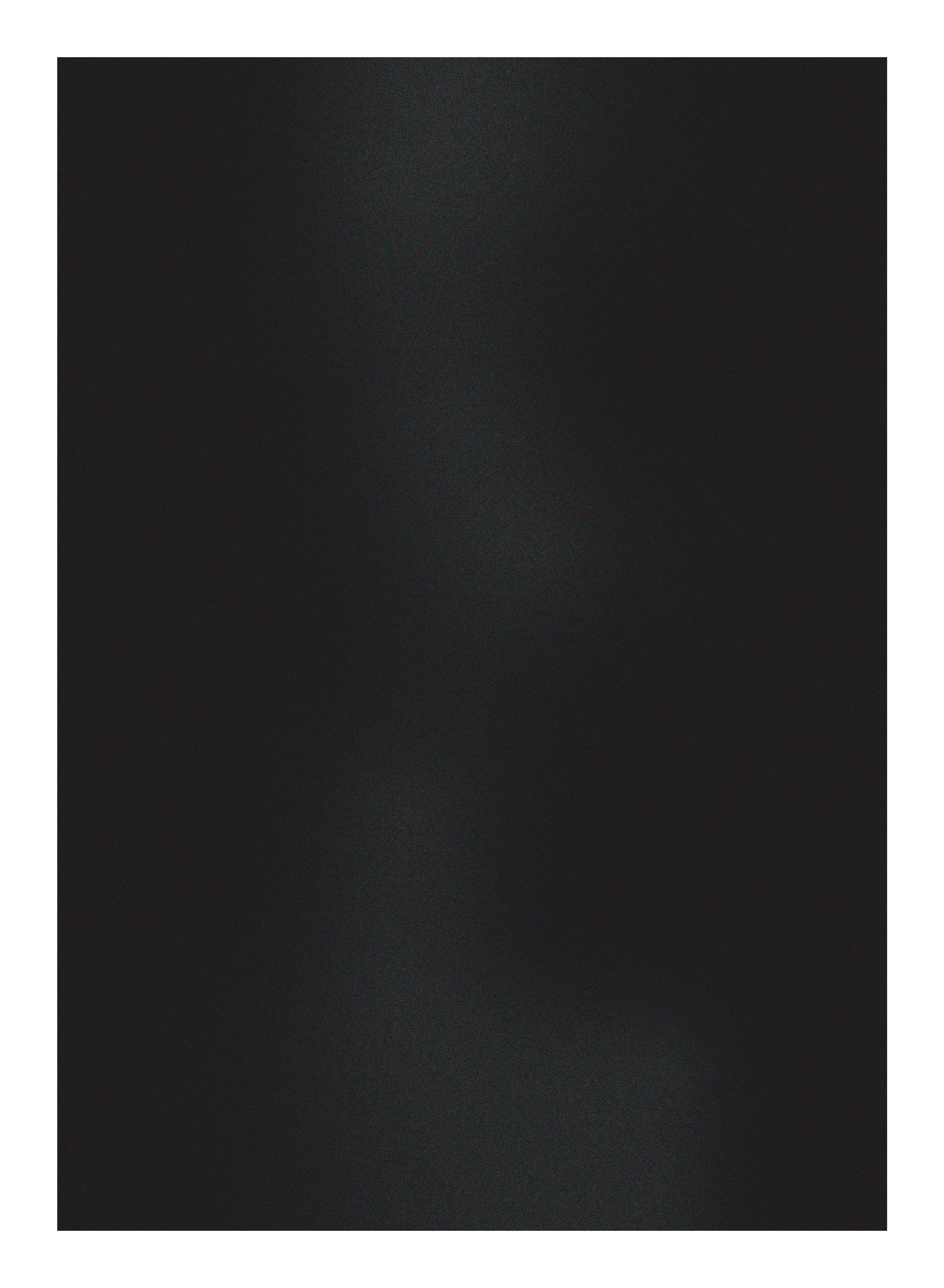The Art of Acquiring Flow
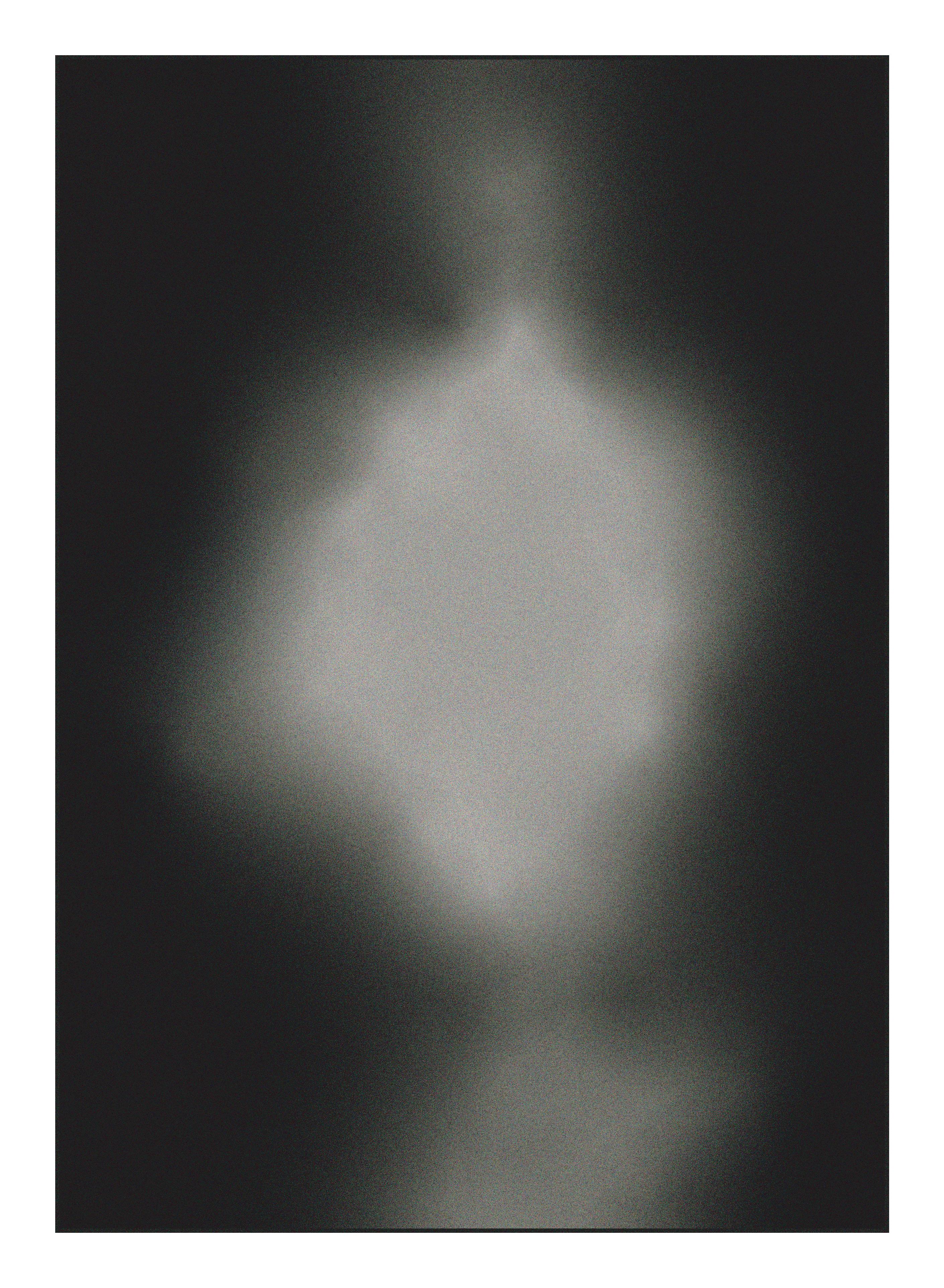
Rohan Shenoy (5238781)

Explore Lab 33
TU Delft Faculty of Architecture
Mentors
Ir. Elise van Dooren Ir. Roel van de Pas
Tutors
Ir. Sabina Tanović Geert Coumans 27 January 2022

4 Introduction

5
The Art Of Acquiring Flow
6 Introduction
Abstract
The study outlined in this paper assesses an architect’s ability to experience ‘design flow’, during the ideation phase, based on the type of design tool utilised. In order to test the hypothesis, I conducted a workshop with a group of MSc architecture students. The students were asked to engage in two design conditions: where they sketch with analogous tools and where they sketch with digital tools. The comparison of these two conditions was based on an EEG and protocol analysis. The results indicate that the use of analogous sketching tools led to a ‘richer’ and prolonged ‘design flow’ experience that was non tool focussed. The study provides insights on why analogous sketching is an essential activity during conceptual ideation and why it should be emphasised as a tool in design education going forward.
Keywords
‘design flow’ design tool
sketching reflective-practice conceptual design ideation croquis
The Art Of Acquiring Flow 7

8 Introduction
Figure 1.01 Architectural Embodiment by Marco Fracasari
Introduction
Freehand sketching is a common human activity, much like writing, that every adult or child has undertaken to record their impressions of an idea. (fig. 1.01) Architects, or practitioners from other design related fields, are the most avid makers of these freehand drawings and refer to them as a croquis 1 In the past, these study sketches have been developed using analogous tools of representation but in today’s society they have been ubiquitously made using digital tools primarily due to the affordability, efficiency and accuracy that it offers. To date, there is a large body of research providing arguments for and against the use of digital design tools during conceptual ideation. For instance, Ibrahim and Rahmian (2010) conducted a series of case studies to compare CAD and manual sketching tools to assess communication amongst novice architects in a collaborative work environment when working on a conceptual design project. They concluded that manual sketching tools are beneficial to novice architects for intuitive ideation albeit their limitation to design problems of a higher complexity. On the other hand, Tang et al’s (2011) protocol analysis, deploying a function-behaviour-structure framework which was proposed by Gero and McNeil (1998), comparing traditional and digital sketching tools concluded that the medium played no influence on conceptual ideation. Building upon these existing studies, the research examines the implication of the choice of tool, by the architect, on one’s ability to achieve ‘design flow’.
1. It is a French term for a rough draft sketch where the drawings usually only take a couple of minutes to be finished. Such a tool allows designers to focus on the essential aspects of the sketch and highlight key concepts. In the research plan and research paper, the term croquis will be used as a synonym for an analogous sketch.
The Art Of Acquiring Flow 9
Theoretical Framework
10 Theoretical Framework
11 The Art Of Acquiring Flow Flow Reflective-Practice Tools of Design Representation Existing Studies 13 15 17 19 i. ii. iii. iv.
12
Theoretical Framework Abilities Challenge Anxiety Flow Boredom Figure 2.01 Flow Theory
Flow
Flow, a theory in positive psychology that was brought forth by the Hungarian psychologist Mihaly Csikszentmihalyi (1997), is considered to be an optimal state of mind where an individual is so involved in an activity that they pursue it for the sheer sake of doing it; the experience becomes so enjoyable that nothing else seems to matter. (fig. 2.01) Csikszentmihalyi (1997) states that five conditions need to be met in order to get into a flow state: merging of action-awareness, loss in a sense of self, deep focus, a sense of control and clear goals with immediate feedback. When these conditions are satisfied, the experience becomes ‘autotelic’ or self-rewarding. (Csikszentmihalyi 2009, 70-75) Studies by Landhäußer & Keller (2012), Elliot & Dweck (2013), Engeser (2012) and Baas, De Dreu, & Nijstadhave (2008) have shown that achieving a flow state has positive effects on learning, well being and creativity. With that being said, it can be argued that achieving such a state of mind is beneficial to architects as it could improve the quality of the design process. In the following paper, I define flow from a design based standpoint, which is a construct that was first introduced by Dorta (2006, 129 -130). The ‘design flow’ theory states that a designer goes through a repetitive cycle of cognitive states, going from stress to optimal to control, when generating ideas; Barr and Maclachan (2019, 2) furthermore found that a high level of flow indicates a ‘richer’ session of ideation. The ‘design flow’ theory serves as the groundwork in understanding the influence of sketching tools on flow and ideation.
The Art Of Acquiring Flow 13
Naming Moving Reflecting
Framing
Figure 2.02 The four design activities and their interplay
CONSTRUCT DESCRIPTION
Naming Framing Moving Reflecting
When the designer explicitly addresses parts of the design task as being important, the activity is coded as naming. The designer looks for objects and elements they consider to be relevant to the task.
When the designer specifies a (sub)problem or a (partial) solution, then the activity is coded as framing The frame provides a designer the context to hold on to while designing.
Actions such as ideating, combining two or more ideas, comparing concepts and sorting through information is coded as moving. During moving, the designer attempts to resolve a problem or restructure the set frame.
When a designer critically reflects on their earlier actions, the activity is coded as reflecting
Figure 2.03 The four conceptual coding activities
Theoretical Framework
14
Reflective-practice
Reflection-in-action, a theory coined by the American architect and philosopher Donald Schön (1991), was used to study the ideation and design process as it provides the framework to examine the experiential knowledge that is most often seen in the creative field. Over the years, the theory was extended by authors such as Badke-Schaub et al. (1999), Lauche (2001, 2002), Reymen (2001), Stumpf and McDonell (2002), Valkenburg (2000) and Self et al (2016) who sought to incorporate it into the design research community. Essentially, reflective-practice is a constructionist view of a designers’ thought process; through the framing of unique problems in unique situations, a designer is able to construct their view of the world from their own experience (Valkenburg and Dorst 1998, 251; Self et al 2016, 3) A reflective-practice is characterised by a ‘reflective conversation with the situation’ where the framework for the paradigm is based on a designers action and a designers ability to take intelligent decisions regarding the action (Dorst and Dijkhuis 1995, 263-264). With this, the designer works by being critical towards their experimental moves after which they react to the situation; this conversation leads to a design. Contrary to the name - reflective practice- four types of design actions exist and these are: naming, framing, moving and reflecting (NMFR). (fig. 2.02) The design process usually starts off with the naming of key aspects or problems of a design assignment which is followed by the framing of a partial solution or sub-problem. (fig. 2.03) Thereafter the designer proposes an idea or a solution -movingafter which they reflect on the action or the proposed frame (Valkenburg and Dorst 1998, 251). Through these actions, new insights are made in the re-framing of a problem or the re-interpretation of a move that allows designers to navigate the ‘ill-defined’ problem space (Goldschmidt 1997, 441-443). It was important to examine the role of the tool on a reflective-practice since the current study investigates the choice of tool on an architect’s ability to achieve ‘design flow’. How does the choice of tool affect the focus of attention on sketching as a tool of representation in comparison to actual design driven work?
Based on the study conducted by (Valkenburg and Dorst 1998, 251), I investigate the influence of focus of attention upon sketching tools for problem definition -naming and framing- and solution ideation -moving and reflecting
The Art Of Acquiring Flow 15
16 Theoretical Framework Visual Imagery Representation Linguistic Representation Overt Exploratory Activity Novelty Problem Solving
Functional usefulness of different modes of representation in problem solving
Figure 2.04
Tools of Design Representation
The design process utilises different types and modes of drawings as representations. 2 Each stage of the design process makes use of a specific type of design representation whether it be through verbal communication, sketches, models, rendered images, blueprints or detailed drawings. (fig. 2.04) As the current study is focused on the conceptual ideation phase, I focus on the figural (Goldschmidt 1997), iconic (Chandler 2002), depictive (Carpo 2013), contextual and exploration (Herbert 1988) sketches that are synonymous with the early stages of the design process; these are the croquis that an architect engages with to not only record an idea but also engage in one which is not there yet (Goldschmidt 1994; Baskinger 2008). The representation of these design solutions can be achieved through the application of a variety of tools, mediums or approaches (Pei, Campbell, and Evans 2011). However, the current study examines the use of digital and conventional sketching tools in the development of a study-sketch. As seen in the study by Self et al (2016), the term tool of design representation (TDR) was used to indicate the medium through which the representation was achieved. I was able to examine how the tool of design representation influenced a designers focus of attention on design driven work or the functionality of the tool itself. The NMFR paradigm that was adopted (Valkenburg and Dorst 1998), was further coded with the TDR and non TDR paradigm, to assess the amount of time that was spent on tool focussed and non-tool focussed activity in the naming, framing, moving and reflecting activities of a particular design task in both the sketching conditions. Design driven activity is defined as the application of the tool in the representation of an idea with the purpose of proposing, evaluating and reflecting on the possible solution (Schön 2017; Self et al 2016).
2. Types refers to a grouping of drawings based on shared characteristics; modes refers to the groupings of drawings based on the way in which the drawing is prepared - orthographic, axonometrics and perspective images (Nandi 2020, 7).
Representation, in the field of architecture, refers to the working medium for the architect (Bafna 2008) and the medium of communication with others (Unwin 2007).
The Art Of Acquiring Flow 17

18 Theoretical
Framework
Figure 2.05 The Hybrid Ideation Space by Toma ́s Dorta
Existing Studies
There have been a few studies conducted on the relation between the choice of tool and ‘design flow’ during conceptual ideation. For example, Dortas (2006) research to test out the Hybrid Ideation Space (HIS), that he and his team had developed, to assess ‘design flow’ concluded that the HIS enriched the ideation process and that the attainment of the flow state is an indicator of a productive ideation session.3 (fig. 2.05) Employing the self-designed ‘design flow’ evaluation system - where the participants periodically identified their state of mind on a flow graph - Dorta’s (2006) study identified that ideation peaks somewhere between arousal and flow. However, a drawback to this study is that being encouraged to think-aloud and being asked to periodically mark a point on the flow wheel during the session is disruptive to ‘design flow’; a deep sense of focus is one of the five pre-conditions to flow that needs to be met. Similarly to Dortas investigation, Barr and MacLachlans (2019) study employed the use of the flow evaluation system to compare traditional and digital sketching tools on creative productivity and engagement amongst twenty industrial design students. The results suggested that digital sketching tools were riveting and led to prolonged flow experiences. Their study furthermore indicated that increased levels of flow negatively impacted productivity as the analogue sketching group produced a higher quantity of ideas. Both the aforementioned studies found that digital sketching created alluring environments allowing for a ‘richer’ flow experience.
In contrast to these studies, the research conducted by Self et al (2016), on industrial design students, compared the influence of digital and traditional sketching on the ideation process by assessing the amount of time that was spent on tool focussed activity. They found that the use of digital tools negatively affected solution-ideation as it fragmented a designers ability to have a reflective conversation. On the other hand, a similar study conducted by Tang et al (2011), utilising the function-behaviour-structure (FBS) framework to analyse the protocol session, concluded that the digital sketching condition is similar to the conventional sketching condition in all aspects. Contradicting Tang et al (2011), Jonsons study (2005) concluded that a hybrid approach, where designers utilised both conventional and digital sketching tools, seemed to be most effective towards ideation. However, he also pointed out that the designers seemed to prefer the use of verbalization and digital drawings to ideate for commercial reasons. Having said that, there were many papers that considered computer aided design as being ineffective to supporting ideation (Stones and Cassidy 2007, 2010; Bilda and Demirkan 2003; Verstijnen et al 1998; Lawson and Loke 1997). The majority of the aforementioned papers are outdated as the quality of digital sketching tools has shown significant improvement up till date. So, is there still a difference between the two sketching conditions and their impact on ‘design flow’? Are digital tools intuitive enough to replace conventional sketching tools? Are they riveting enough to allow designers to lose their self-awareness? The current study seeks to address these questions.
3. The hybrid ideation space is an immersive sketching and model making system that creates an amalgam between conventional and digital tools; it allows the designer to continuously reflect with their design representation. It gives designers the possibility to sketch and make models in real time through the use of a digital tablet, screen-shotting, and a spherical projection device (Dorta 2006, 122).
The Art Of Acquiring Flow 19
Aim
I explore the implication of the choice of tool on an architect’s ability to achieve ‘design flow’ and the impact that it has on ideation. With this in mind, the research seeks to address the following research question:
How does the use of croquis, as an architectural design tool, aid the process of creating ‘design flow’ during conceptual ideation?
The sub-questions of the research will be the following:
What exactly constitutes a state of flow in architectural conceptual thinking and design development? What and whether stages of the design process can be discerned? How does practising through analogue methods feature in achieving the state of ‘design flow’?
20 Aim
21
The Art Of Acquiring Flow
Research Methodology
i. ii. iii. iv. v. vi.
Method Participants Study Task Environment Design Task Task Procedure Analysis
24 26 27 27 28 29
The
23
Art Of Acquiring Flow
Method
I made use of protocol and electroencephalogram (EEG) analysis as a research method to investigate the effect of the sketching condition on ‘design flow’.4 It is regarded that protocol analysis remains the most widely used approach of all the qualitative and quantitative methods of study employed to explore design activity. (Cross, Christiaans, and Dorst 1996; Suwa and Tversky 1997; Chai and Xiao 2012). As sketching is a situated activity within the design process, protocol analysis was deemed suitable to examine how the sketching condition influences one’s ability to achieve ‘design flow’ (Perry and Krippendorff 2013).
4. An EEG is a test that detects brain wave signals, or electrical activity in the brain over an extended period of time. They pick up on electrical activity in the brain and amplify the readings so that they can be digitised for storage and data processing. This can be used to gain insight on the cognitive functioning of an individual and detect different moods that the wearer finds themselves in.
24 Proposed Research Methodology
PARTICIPANT PROFILE
is an architect who prefers to do her conceptual sketching work analogously. She is organised, a perfectionist, with a good feel for aesthetics, and prefers to work in a cluttered environment. Typically, I found most of the participants staying in their place while they sketched, but Bente was very dynamic with her work environment and was even found sitting on top of the table at the end of session.
is a confident architect who is self -assured, goal focused, and straightforward with her method of designing. She set herself clear objectives with both the design sessions and was well versed in the use of both digital and analogous tools during the conceptual ideation phase.
is an architect who enjoys the theoretical side of the profession; he is analytical, critical and ideological. He was very relaxed in both the sessions and was skilled with both the sketching conditions.
is an architect with an artistic background; he is highly skilled with analogous and digital drawings. Isaak is also very passionate, imaginative and enjoys the story telling part of the creative field.
is a sensitive architect who has a strong taste with her design representation. She is efficient, passionate, showed a strong awareness for time and is detail oriented with her design decisions. Lana also mentioned that she had never used a digital pen to ideate before.
is a calm and reflective architect who looked for creative meaning behind his design choices. He is observative, inquisitive, sensitive and has a good eye for detail. Marius enjoyed both the sessions even though he preferred the use of the traditional pen.
is an architect who is obsessive and compulsive as a designer. He tends to conceptually sketch using 3D modelling software but also enjoys using conventional sketching tools. He is driven, passionate, detailistic and follows the theme of sustainability with his design decisions. He was also very particular with his design station, asking me whether he could reorganise it right when he came in.
is an architect who is a perfectionist, logical, and critical; she is also very fashionable and has a strong taste for graphics. She is an expert technology user with 3D modelling software but chose to use the pen instead for the digital session.
is a highly reflective and sensitive architect that showed strong consideration for societal issues with her designs. She was also very self-conscious in both the sessions, since she had paused her education as an architect for the last couple of years. Additionally, prior to this experience, she had never used a digital pen to ideate.
is the other architect, apart from Ragnar, who sought to re-arrange his work environment to feel more comfortable. He is very inquisitive, curious, technological and has a strong passion for systematic design or the functional design of spaces. He also prefers to use both digital and conventional tools when conceptually ideating.
The Art Of Acquiring Flow 25
Bente Demi Fabian
Isaak Lana
Marius
Ragnar Rhetta
Figure 3.01 Participant Profiles
Sandra Tim
Participants









Figure 3.02 Participants
A sample of ten (n=10) final year MSc architecture students, above the age of 23 years, from the highly esteemed Technical University of Delft (TUD) volunteered to participate in the study. (fig. 3.01, 3.02) The sample was restricted to final year MSc architecture students since the study required participants of similar design abilities to limit the influence of experience on the research outcome. All the participants have completed four years of their study and have had industry experience as either architects or interns. As such, the complexity of the design exercise didn’t exceed the participants’ perceived skill level and impede their ability to achieve the flow state (Csikszentmihalyi 2009, 49).
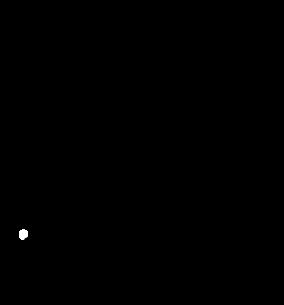
26 Proposed Research Methodology Tools Evaluation forms Microphone iPad showing waves EEG headset Camera
Bente
Sandra
Isaak Tim Ragnar Rhetta
Demi Fabian Lana
Marius
Figure 3.03 Tools utilised to record study task environments
Study Task Environment
The subject’s sketching process to the given design exercise was recorded with one camera, an EEG headset and a lavalier microphone. (fig. 3.03) The camera was positioned overlooking the participant to record their sketching, writing and reading activity; The EEG headset was worn by the subject during the design task to capture brain wave signals; The lavalier microphone was used to capture audio from the think-aloud session. During the traditional sketching session, participants were provided with analogous sketching material such as pens, pencils, markers and paper. During the digital sketching condition,participants were provided with a HP Zbook Studio x360 convertible laptop loaded with software such as Rhinoceros, Sketchup, ArchiCAD, and the Adobe Suite. (fig. 3.04)
Design Task
The participants were presented with two design tasks spaced two weeks apart. With the first sketching condition -digital- I tasked the subject to conceptualise a library, with no height or footprint restrictions, in Hyde Park, London. (fig. 3.04) The second sketching condition -analogous- required the participants to design a Hotel in Rovaniemi, Finland with no height or footprint restrictions. (fig. 3.04) The study required the subjects to participate in both the design sessions individually in an isolated room. Although taking such an experimental approach to studying the design process de-contextualises such a collaborative and context driven task, using a controlled environment allowed for a focused analysis on the relation between the tool, the participant and design flow which would not be possible in a ‘in-the-wild’ method of research. (Michel 2007, 14-15)
Digital Session
HP Zbook Studio x360
Library in London Hotel in Rovaniemi
Analogue Session
Paper
Pens & pencils
Figure 3.04 Resources provided during each design task
The
Of
Flow 27
Art
Acquiring
Task Procedure
The subjects were provided an information sheet clarifying the aims of the research, their rights, the objectives of the task, method of recording and the time given to complete the design exercise. The participants were then fitted with an EEG headset after which I withdrew from the environment and allowed the participant to tackle the design task individually. (fig. 3.05)


Immediately after the design exercise, the participants were asked to fill in an evaluation form after which they took part in a think-aloud session. During this part of the session, the participants were asked to describe their thought process as they watched the recorded sketch session. The retrospective think aloud session was conducted after the design task to avoid the participant from getting distracted as thinking aloud during the design task would hinder their ability to get into a flow state (Self et al. 2016). The 20 sessions involving the 10 participants were completed in isolated rooms at the Bouwkunde building at the TUD over a period of four weeks.
Figure 3.05 Participants in study task environment
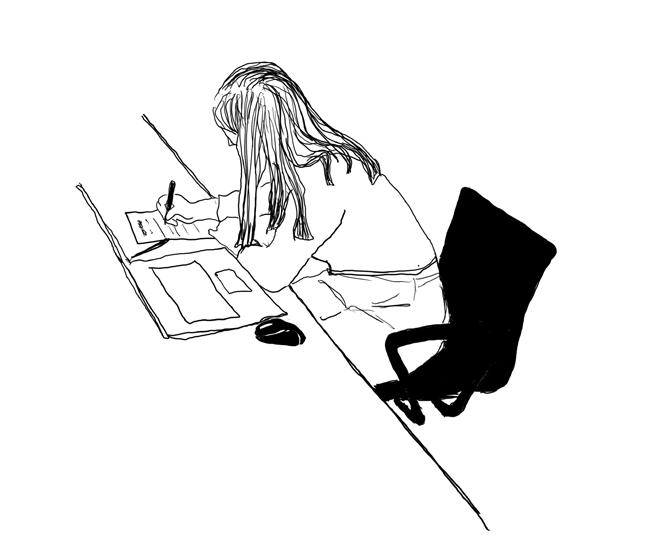
28 Proposed Research Methodology
Digital Task Environment
Analogue Task Environment
Analysis
The study made use of a multi-stage evaluation procedure to assess characteristics for ‘design flow’ before, during and after the design exercise. A pre-evaluation task, in the form of a five point Likert scale, was used to get the measure of the subjects perceived interest, control, challenge and skill of the design exercise. (appx. 6.01) During the exercise itself, the EEG headset captured the subjects brain wave signals by tracking their cognitive experience. The end of the exercise made use of a postevaluation Likert scale, Dorta’s Flow Scale and Flow Wheel (2006), and a think aloud session. (fig. 3.06) The participants were first asked to complete a Likert scale that was utilised in the pre-evaluation task in order to create a comparison between the two. (appx. 6.02) Right after, the participants filled out the flow scale which collected data on the 12 essential characteristics used to measure flow. (appx. 6.03) This was then followed by the participants being asked to mark their state of mind on the flow wheel, at three minute intervals, as they re-watched the recorded sketch session. (fig. 3.07, appx. 6.04) Additionally, four of the ten participants were chosen, by my research mentor and I, to verbalise their design process through a think-aloud session to capture phrases, and key words that connect ideas at the end of the session.5 The extensive analysis procedure allowed for significant data collection on flow without any disruptions.
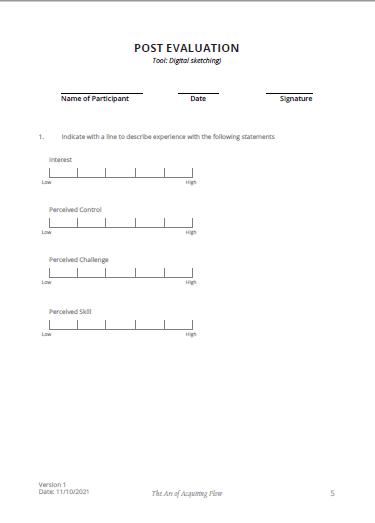

5. The participants were chosen by my research mentor and I after their names were coded and a key designer attribute was provided. This was to create a wider gauge for the data collection that was deemed important for the small size of the study sample.
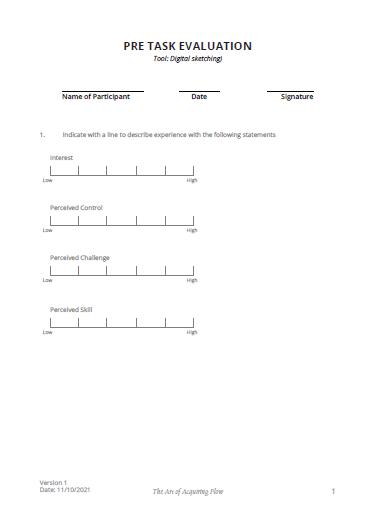
The Art Of Acquiring Flow 29
Challenge + Skills + anxiety arousal boredom relaxation
flow w o r r y c o n t r o l
apathy
Figure 3.07 Flow wheel Figure 3.06 Evaluation Forms
Results
30 Results
i. ii. iii. iv. v. vi. vii. viii.
Outcome Pre-Task Evaluation Post-Task Evaluation Flow Scale Flow Wheel Brain Waves TDR & Non-TDR Focussed Activity Croquis
32 33 33 34 36 38 40 46
31
The Art Of Acquiring Flow
Outcome
The results of both an empirical quantitative analysis and a comparative qualitative analysis are presented in the following section. Initially, an analysis of the pre-task evaluation, post-task evaluation, the flow questionnaire and the flow wheel results examine the effect of the sketching condition on one’s ability to achieve a ‘design flow’ state during conceptual ideation. This is followed by an examination of the participants brain wave signals, during the digital and conventional sketching condition, to gain a neurological cognizance on the flow experience and affirm the findings from the previous analysis. After that, an analysis of the protocols, encoded with reflection-in-action activities (naming, framing, moving and reflecting) together with TDR (tool focused) and Non-TDR (non-tool focused) focussed activities, examines the ‘richness’ of the flow episode and the implication of tool focused activity on ideation.6 This is aided by flow chart illustrations, bubble diagrams and images of design activity during both the sketching conditions. Finally, an analysis of the croquis from the two sketching conditions is presented to compare the quality of the output; this was done to examine its association to the choice of tool and its relation to ‘design flow’.
32 Results
Pre-Task Evaluation
ASPECTS DIGITAL MEAN SD DIGITAL SAMPLE SD DIGITAL ANALOG MEAN SD ANALOG SAMPLE SD ANALOG
Interest Control Challenge Skill
4.000 3.200 3.400
4.000
0.632 1.166 0.894 0.663
0.667 1.229 0.943 0.699
4.600
3.500 4.000 3.600
0.490 0.806 0.775 0.917
0.516 0.850 0.816 0.966
Figure 4.01 Pre-evaluation task results
The pre-task evaluation showed high interest levels in the task with the analogue session showing a higher level of interest (μ = 4.6) compared to the digital session (μ = 4.0); (fig. 4.01) interest in the task is an important condition to assess flow in an individual. (Csikszentmihalyi 2009, 116-130). In this study, the hardware was standardised and the participants were provided with a HP Zbook Studio x360 convertible laptop with a digital pen. The most popular software was Photoshop (n=10) with the use of a digital pen; Tim and Ragnar utilised Rhinoceros, a digital 3D modelling software, to design their concepts for the majority of the session while Fabian, Sandra, and Marius utilised Rhino to validate their ideas before they sketched it out on Photoshop.
Post-task Evaluation
ASPECTS
Interest Control Challenge Skill
DIGITAL MEAN SD DIGITAL SAMPLE SD DIGITAL ANALOG MEAN SD ANALOG SAMPLE SD ANALOG
4.600
4.200 3.400
3.900
0.663 0.872 1.136 1.200
0.699 0.919 1.197 1.265
4.400 0.917 0.640 1.077 0.700
4.300 3.800
0.966 0.675 1.135 0.738 4.100
Figure 4.02 Post-evaluation task results
Looking at figure 4.02, the post-task evaluation showed a drop in interest levels with the analogue session (μ = 4.4) while there was a significant increase in interest levels with the digital session (μ = 4.6). The participants perceived control in both the analogue (μ = 4.3) and digital (μ = 4.2) sketching condition surged appreciably; a greater sense of control allows an individual to identify opportunities, establish goals and attain feedback (Csikszentmihalyi 2009, 60-61). Interestingly, the participants’ perceived skill level in the analogue session went up (μ = 4.1) while it stayed the same for the digital session (μ = 3.4) hinting at a higher degree of self consciousness and anxiety in the latter.7
6. The richness of the flow episode here is defined as an emphasis which is placed on ideation rather than tool focussed activity.
7. Self-consciousness leads to a lack of confidence in pursuing a task which is a strong inhibitor to flow (Csikszentmihalyi 2009, 62-65).
The Art Of Acquiring Flow 33
Flow Scale
The flow scale, which is a flow measurement instrument based on Dortas questionnaire (2006), measured the flow frequency of the participants based on twelve essential characteristics. As can been seen in figure 4.03, anxiety was found to be slightly higher in the digital session (μ = 3.95). This was evident in the case of Ragnar who decided to elaborate his ideas with the use of the software Rhino. When questioned on whether he utilised Rhino for ideation, he said ‘Yeah, but I think I would add a little bit of Grasshopper to ease things. Especially if it’s a concept.’ Even with this being the case, the use of the digital tool seemed to make him quite anxious. ‘Fuck! I don’t remember a lot of stuff!’ said Ragnar as he contemplated using Grasshopper to complement Rhino. He decided to stick with Rhino as he felt that he did not have enough time to figure out what tools he wanted to utilise in Grasshopper. He proceeded to use Rhino to three dimensionally model his concept where he ran into some tool based difficulties. ‘Fuck! There’s a whole bunch of commands that I was like - How do you do that?’ he said in exasperation. He stated that this thought played in his head throughout the entire time that he was using Rhino. ‘Yeah, I wasn’t really happy with the practicality from my side.’ he reflected towards the end of the session, when questioned on whether the use of the tool was causing him anxiety. Participants such as Tim, Marius, Bente, and Demi, much like Ragnar, had similar tool based issues that caused them to feel anxious and doubt their ability. Rhetta, who had experience with the use of a digital sketching tablet and Photoshop, felt slight anxiety initially with the standardised digital pen that was given to her. ‘It was a bit troublesome for me because I’m used to my tablet. You have sort of this wheel to zoom in and zoom out.’ she muttered. This anxiety towards the tool slowly dissipated over time and transitioned towards the quality and representation of her sketches. When re-watching her digital session, she was surprised to see that she had erased an entire section from her digital page. She ended up erasing and re-drawing multiple sketches through the entirety of the session. When reflecting on her prior actions, she thought that it was because she was dissatisfied with the harshness of the lines and the resulting drawing. This was affirmed later on, by one of plenty statements made, where she said ‘Here, I was really trying the line weights which bugged me.’ One might wonder why the representation was causing Rhetta so much anxiety as the assignment was to rough sketch. ‘Yeah, I think [pause] because I associated digital tools with very precise sketching.’ Rhetta explained during the analogue think aloud session when I stated that I had noticed a difference in the line quality of her sketches. Lana and Demi were the other participants who showcased similar frustration towards the design representation with the use of digital tools. Only two of the participants, Fabian and Isaak, did not show high levels of anxiety due to the tool in the digital session. Amongst other findings, intrinsic motivation was substantially higher for the analogue session (μ = 6.8) in comparison to the digital session (μ = 5.2). Additionally, distraction was found to be lower in the conventional group (μ = 1.75). (fig 4.03)
Timelessness was experienced equally in both groups (μ = 7.6) which corroborated with Mayer’s Likert based Flow Scale (Mayers 1978). Although the ratings suggest distortion of time was found to be similar, the think aloud session showed otherwise. ‘Yeah. I was always aware of time.’ said Ragnar towards the end of the digital session. Rhetta and Isaak had moments where they experienced time distortion but they were brought back to reality since they were able to look at the time on the laptop. ‘I looked at the recording and I saw thirty-nine minutes at a certain moment. Yeah, I thought about that…a little bit.’ said Isaak when questioned on his awareness of time. The protocol analysis for the analogue session showed a greater sensation of time distortion.
‘It felt like fifteen minutes. As I said, the first five minutes, I completely lost the sense of time. It didn’t exist. Actually, if I were to refer back to that, for me, I would still say, time stopped. I’m still convinced that I didn’t exist for that hour.’
34 Results
ASPECTS DIGITAL MEAN SD DIGITAL SAMPLE SD DIGITAL ANALOG MEAN SD ANALOG SAMPLE SD ANALOG
I get involved
I get bored
I get anxious
I have to make an effort to keep my mind
I clearly know what i am supposed to do
I would do it even if i didn’t have to
I got direct clues as to how well i am
I get distracted
I feel i can handle the demands of the
Time passes
I feel self-consious
3.950
8.200 1.950 2.050 7.550 5.200 4.500 3.100
7.700 7.600 5.450
1.470 2.115 4.772 1.710 1.724 3.116 2.748 2.059
1.764 2.200 3.094
1.549 2.229 5.030 1.802 1.817 3.285 2.896 2.171
1.859 2.319 3.261
8.800 2.400 3.150 1.550 6.800 3.600 1.750 7.900
0.678 1.960 2.490 0.723 1.806 2.685 2.634 1.006
8.200 1.044 2.223 2.806
0.715 2.066 2.625 0.762 1.903 2.830 2.777 1.061
7.600 5.450
1.101 2.343 2.958
I enjoy the experiences 8.300 0.781 0.823 8.450 1.083 1.141 Figure 4.03 Flow scale results
said Isaak at the end of the analogue session when asked about his sensation of time.
‘I do think here, cause I started already using like colour, and it kind of …yeah everything was blurred together, like the time etc.’ said Rhetta as she was reflecting on her design choices. Similar responses were given by both Ragnar and Sandra during the think aloud session, but Ragnar did admit to looking up at the camera now and then to see how much time he had left. These statements point towards a greater sense of time distortion in the analogue session, although a larger sample size for the think aloud session is required to confirm this. Altogether, concerning the twelve questions, the participants gave high ratings to the options - I get involved, I clearly know what I’m supposed to do, I feel I can handle the demands of the situation, time passes and I enjoy the experience - while they gave low ratings to the options - I get bored, I have to make an effort to keep my mind on the task and I get distracted; these are the indicators to experiencing ‘design flow’. The oddity regarding direct clues was found to be low in both the digital (μ = 4.5) and analogue group (μ = 3.6); immediate feedback in the creative field requires individuals to have internalised criteria to determine what is “good” and “bad” (Csikszentmihalyi 2009, 55-57).
The Art Of Acquiring Flow 35
Flow wheel
ASPECTS DIGITAL MEAN SD DIGITAL SAMPLE SD DIGITAL ANALOG MEAN SD ANALOG SAMPLE SD ANALOG
Control
Boredom Relaxation Apathy Worry Anxiety Arousal Flow
2.600
1.000 1.000 0.500 1.100 3.100 3.400
2.141 1.049 0.894 0.652 1.063 2.274 2.155 2.363 5.600
1.100
1.900 0.300 0.400 0.500 4.300
8.400
2.257 1.106 0.943 0.687 1.120 2.397 2.800 2.272 2.491
1.972 0.900 0.663 0.806 1.044 2.857 2.648 2.973
2.079 0.949 0.699 0.850 1.101 3.011 2.791 3.134
Figure 4.04 Flow wheel results
Figure 4.04 shows the results from the flow wheel of the participants; the results follow the tendency that ideation is most commonly associated with arousal, anxiety, control and flow. During the midst of generating ideas, the participants usually found themselves feeling arousal or anxious depending on whether they found an idea to be worth pursuing or not. This was then followed by either flow or control once a particular idea was locked in. When comparing the results of the digital and analogue design sessions, flow was experienced more predominantly in the analogue session (μ = 8.4) in contrast to the digital session (μ = 5.6). (fig. 4.04) Isaak, the expert sketcher, was the participant who experienced flow with a higher frequency in both sessions in comparison to the other participants. (fig. 4.05)
‘It’s very difficult to capture because I was in this state of complete concentration in the process of writing it down. The drawing was so smooth coming from my mind through my hand and the tool to the paper that I wasn’t really aware [laughs] of being.’ he said during the analogue session. He later on describes how he felt when he encountered a problem that stopped his momentum in the pursuit of an idea.
‘Let’s say I was swimming in water and that was the moment when someone pulled me out because there was a little bit of like this change of context.’
he said as he reflected on the experience. He was metaphorically describing the experience of transitioning from a flow state to anxiety. He furthermore goes on to compare his experience in both the sessions.
‘I think I wouldn’t even call it a conversation because in comparison to the digital approach, back then there was, I think, more distance between me and the paper that there was space for a conversation. Like this time, it was so fluent that it was going immediately from my mind to paper, so it was a very long monologue I’d say.’
he recalled. He favoured the analogue flow experience as he felt that ideas flowed more naturally in
36 Results
comparison to the digital session. Ragnar and Rhetta were not as descriptive as Isaak when it came to describing their state of being but one of the aforementioned statements that was made by Rhetta during the analog session where she talks about the whole session feeling blurred and distorted is a clear indicator of ‘design flow’. During the digital session, a few of the participants ended up confusing ‘design flow’ for activities that were repetitive or that did not require cognition.
‘So, this was basically me, pressing one slab, clicking on one place, typing move, clicking, typing one point five metres, and then clicking the direction of that slab, so that it’s all straight. And then doing that fifteen to twenty times. It’s what I was doing there. [pause] So, then I was likeOkay, I got a workflow that I could do for the next two-three minutes.’
stated Ragnar as he marked a point on flow in the flow panorama wheel. A larger sample size for the protocol analysis is required to attest these findings on the ‘purity’ of the ‘design flow’ experience within the digital sketching condition.8 Apart from flow, the analogue session also showed higher scores in arousal (μ = 4.3) and slightly lower scores in anxiety (μ = 2.8). The results furthermore show that productive ideation crests when architects tend to find themselves between a state of arousal and flow - which was more frequent in the analogue session.
Analogue Session
Challenge + Skills +
arousal boredom relaxation apathy
anxiety
anxiety
flow w o r r y c o n t r o l
arousal boredom relaxation apathy
Challenge + Skills +
anxiety
arousal boredom relaxation apathy
flow w o r r y c o n t r o l
flow w o r r y c o n t r o l Challenge + anxiety
flow w o r r y c o n t r o l
arousal m a
flow w o r r y c o n t r o l
Challenge + Skills +
Figure 4.05 Flow results of individual participants
Ragnar Isaak
anxiety
Challenge + anxiety
8. Purity here is used in the sense of flow directed towards ideation rather than tool focused activity.
arousal boredom relaxation apathy 37
arousal m a
flow w o r r y c o n t r o l
The
Challenge + Skills +
Art Of Acquiring Flow
Digital Session
Brain Waves
The results from the current study, as seen in figure 4.06, show increased brain wave activity with the theta and delta brainwaves during the analogous sketching conditions amongst three - Isaak, Ragnar and Tim - of the ten participants. The files of the brainwave activity from the other participants was found to be corrupted and were hence not utilised. Of the five brain wave types, theta waves are most associated with ideation; an individual can often find themselves with higher theta brainwave frequencies in activities such as showering, driving on a highway, brushing their hair etc. due to the automatic nature of the task (Mankar et al. 2014). Basic activities that are quite repetitive, routine and well known allow an individual to suspend the left side of the brain and then release the right side to engage in tasks such as visualising, imagining, and problem solving (Bolden 2009, 5; Cummings and Hall 2004) Rough sketching is considered to be one of the many activities that allows an individual to fully immerse themselves in ideation. (Plimmer, Tang, and Young 2006). Delta waves, on the other hand, are associated with a loss of bodily awareness and to decrease our awareness of the physical world (Bolden 2009, 5; Warner 2013). A loss in a sense of self is one of the five pre-flow conditions that indicates whether an individual is in flow (Csikszentmihalyi 2009, 62-66). Thus, when superficially looking at the graphs, the higher frequency of cognitive activity with theta and delta brain waves indicate a richer ‘design flow’ session with the use of analogous tools. Although this seems to be the case, an in depth analysis from a neuroscientist would be beneficial to better assess the findings from the two sessions.
38 Results
0 1
0.5
0.5
1
1 4: 2 P M 4: 2 P M 4: 2 P M 4: 2 P M 4: 2 P M 4: 3 P M 4: 3 P M 4: 3 P M 4:32 P M 4: 3 P M 4: 3 P M 4: 3 P M 4: 3 P M 4: 3 P M 4: 3 P M 4: 3 P M 4: 3 P M 4: 3 P M 4: 4 P M 4: 4 P M 4: 4 P M 4:42 P M 4: 4 P M 4: 4 P M 4: 4 P M 4: 4 P M 4: 4 P M 4: 4 P M 4: 4 P M 4: 4 P M 4: 4 P M 4: 4 P M 4: 5 P M 4: 5 P
M 4:52 P M 4: 5 P M 4: 5 P M 4: 5 P M 4: 5 P M 4: 5 P M 4: 5 P M 4: 5 P M 4: 5 P M 4: 5 P M 4: 5 P M 5: 0 P M 5: 0 P M 5: 0 P M 5: 0 P M 5: 0 P M 5: 0 P M 5: 0 P M 5: 0 P M 5: 0 P M 5: 0 P M 5: 0 P M 5: 0 P M 5: 1 P M 5: 1 P M 5: 1 P M 5: 1 P M 5: 1 P M 5: 1 P M 5: 1 P M 0 -0.5
1.5 -0.5 0 0.5 1 1.5 1:18 PM 1:19 PM 1:20 PM 1:20 PM 2 PM 1:22 PM 1:23 PM 1:23 PM 1:24 PM 1:25 PM 1:26 PM 1:26 PM 1:27 PM 1:28 PM 1:29 PM 1:29 PM 1:30 PM 1:31 PM 1:32 PM 1:32 PM 1:33 PM 1:34 PM 1:35 PM 1:35 PM 3 PM 1:37 PM 1:38 PM 1:38 PM 1:39 PM 1:40 PM 1:41 PM 1:41 PM 1:42 PM 1:43 PM 1:44 PM 1:44 PM 1:45 PM 1:46 PM 1:47 PM 1:47 PM 1:48 PM 1:49 PM 1:50 PM 1:50 PM 5 PM 1:52 PM 1:53 PM 1:53 PM 1:54 PM 1:55 PM 1:56 PM 1:56 PM 1:57 PM 1:58 PM 1:59 PM 1:59 PM 2:00 PM 2:01 PM 2:02 PM 2:02 PM 2:03 PM 2:04 PM 2:05 PM 2:05 PM 0 PM -0.5 0 0.5 1 1.5 1:11 PM 1:11 PM 1:12 PM 1:13 PM 1:13 PM 1:14 PM 1:15 PM 1:15 PM 1:16 PM 1:17 PM 1:17 PM 1:18 PM 1:18 PM 1:19 PM 1:20 PM 1:20 PM 1:21 PM 1:22 PM 1:22 PM 1:23 PM 1:23 PM 1:24 PM 1:25 PM 1:25 PM 1:26 PM 1:27 PM 1:27 PM 1:28 PM 1:29 PM 1:29 PM 1:30 PM 1:30 PM 1:31 PM 3 PM 3 PM 3 PM 1:34 PM 1:34 PM 1:35 PM 1:35 PM 1:36 PM 1:37 PM 1:37 PM 1:38 PM 1:39 PM 1:39 PM 1:40 PM 1:41 PM 1:41 PM 1:42 PM 1:42 PM 1:43 PM 1:44 PM 1:44 PM 1:45 PM 1:46 PM 1:46 PM 1:47 PM 1:48 PM 1:48 PM 1:49 PM 1:49 PM 1:50 PM 1:51 PM 1:51 PM The Art Of Acquiring Flow 39 ANALOGUE Isaak Delta Theta Beta Alpha Gamma DIGITAL Ragnar Tim
1.5 3:06 PM 3 7 PM 3:08 PM 3:08 PM 3:09 PM 3:10 PM 3:11 PM 3:12 PM 3:13 PM 3:13 PM 3:14 PM 3:15 PM 3:16 PM 3:17 PM 3:17 PM 3:18 PM 3:20 PM 3:21 PM 3:22 PM 3 2 PM 3:23 PM 3:24 PM 3:25 PM 3:26 PM 3:26 PM 3:27 PM 3:28 PM 3:29 PM 3:30 PM 3:31 PM 3:31 PM 3:32 PM 3:33 PM 3:34 PM 3:35 PM 3:35 PM 3:36 PM 3:37 PM 3 8 PM 3:39 PM 3:40 PM 3:40 PM 3:41 PM 3:42 PM 3:43 PM 3:44 PM 3:44 PM 3:45 PM 3:46 PM 3:47 PM 3:48 PM 3:48 PM 3:49 PM 3:50 PM 3:51 PM 3:52 PM 3:53 PM 3 3 PM 3:54 PM 3:55 PM 3:56 PM 3:57 PM 3:57 PM 3:58 PM 5 4 PM 5:22 PM -0.5 0
1.5 4 4 PM 4:55 PM 4:56 PM 4 7 PM 4:57 PM 4:58 PM 4 9 PM 5:00 PM 5:01 PM 5 1 PM 5:02 PM 5:03 PM 5 4 PM 5:04 PM 5:05 PM 5 6 PM 5:07 PM 5:08 PM 5 8 PM 5:09 PM 5:10 PM 5 1 PM 5:12 PM 5:12 PM 5 3 PM 5:14 PM 5:15 PM 5 5 PM 5:16 PM 5:17 PM 5 8 PM 5:19 PM 5:19 PM 5 0 PM 5:21 PM 5 2 PM 5:23 PM 5:24 PM 5 5 PM 5:26 PM 5:26 PM 5 7 PM 5:28 PM 5:29 PM 5 0 PM 5:30 PM 5:31 PM 5 2 PM 5:33 PM 5:33 PM 5 4 PM 5:35 PM 5:36 PM 5 7 PM 5:37 PM 5:38 PM 5 9 PM 5:40 PM 5:40 PM 5 1 PM 5:42 PM 5:43 PM
3:19 PM -0.5
0
0.5
1 5: 0 P M -0.5
1.5 1:49 PM 1:50 PM 1:51 PM 1:52 PM 1 2 PM 1:53 PM 1:54 PM 1:55 PM 1:55 PM 1:56 PM 1:57 PM 1:58 PM 1:58 PM 1:59 PM 2:00 PM 2:01 PM 2:01 PM 2:02 PM 2:03 PM 2:04 PM 2:04 PM 2 5 PM 2:06 PM 2:07 PM 2:07 PM 2:08 PM 2:09 PM 2:10 PM 2:10 PM 2:11 PM 2:12 PM 2 3 PM 2:13 PM 2:14 PM 2:15 PM 2:16 PM 2:16 PM 2:17 PM 2:18 PM 2:19 PM 2:19 PM 2:20 PM 2:21 PM 2:22 PM 2:22 PM 2:23 PM 2:24 PM 2:25 PM 2 5 PM 2:26 PM 2:27 PM 2:28 PM 2:28 PM 2:29 PM 2:30 PM 2:31 PM 2:31 PM 2:32 PM 2 3 PM 2:34 PM 2:34 PM 2:35 PM 2:36 PM 2:37 PM 2:37 PM
Figure 4.06 Brain wave graphs
TDR and Non-TDR focused activity
The protocol session, which occurred after the marking of the flow wheel, was coded with reflection-in-action activities (NMFR) and further encoded with TDR and non-TDR focused activities. (fig. 4.07) A calculation of the mean (μ) and standard deviation (σ) of the frequencies of these encoded activities provided an indication of the dispersion of each type of activity by the participants. The results showed that the frequency of TDR focused activities was much higher in the digital session (μ=53) when compared to the analogue session (μ=23); naturally, non-TDR focussed activities were significantly higher in the analogue sketching condition (μ=176) when compared to the digital (μ=125). (fig. 4.07) This indicates that the participants spent a lot more time on tool focussed activity during the digital sketching session. Furthermore, when looking into non-TDR focussed activities, it can be observed that the participants spent more time in naming (μ=16.75) and framing (μ=34.75) rather moving (μ=53.5) and reflecting (μ=20.5) during the digital session when compared to the analogue session. In the non-TDR focused activities during the analogue session, the participants spent noticeably more time in moving (μ=90.5) and reflecting (μ=46) indicating a ‘richer’ ideation session. Moreover, the results also highlight that much of the flow experience during the analogue session was leading towards ideation whereas the digital session was predominantly tool focused flow.
When qualitatively studying the protocol session of the digital sketching condition, three of the four chosen participants - Rhetta, Ragnar and Sandra - spent some amount of time initially familiarising themselves with the digital tool. ‘Okay, first the pen. I was trying to get to know the pen and for me colours are important, so I wanted to get the right colour before I started because if not, it bothers me to work with’ said Ragnar in the third minute of the digital session. ‘I think I’m trying out like the brushes and again, I think the scale was a bit…tricky to work with.’ reiterated Rhetta in the second minute of the digital session. Sandra spent the first six minutes of the assignment analysing the task and naming (non-TDR) important things. This was followed by her getting acquainted with the tool which caused her some anxiety. ‘So, here I just was like - Okay, this is like the highway thing. Well I just want to write but then I got a panic [laughs].’ said Sandra as she used the wrong tool in the software. Isaak on the other hand, showed his expertise with digital sketching by first adjusting the digital pen to his needs in the first minute. ‘I started reorganising the space, getting rid of everything that was unnecessary. Just picked one tool, just brush with extra sensitivity for hardness.’ stated Isaak after which he immediately got down to naming and framing (non-TDR) activities for the task. In the analogue session, all the participants initially spent some time on naming and framing activities which were non-TDR focussed. Only Ragnar and Isaak started moving (non-TDR) early since they found their respective concepts during the fourth minute of both their sessions. Moving back to the digital session, there was a tendency amongst the participants which showed fragmentation with the NMFR activities. Tool focussed activity resulted in an inability to transition between problem definition (naming and framing) and solution ideation (moving and reflecting) which impeded them from getting into a reflective mode of working. As a result, most of the ideas never managed to find themselves on the digital paper.
‘So I thought I have too many ideas…too much in my head. I have to put down something on paper even if it’s not relevant. Well, it’s a trial because in the beginning, I had a list of potential solutions to this problem and I really had to get rid of all of them to get sort of have a clarity in my mind.’
said Isaak in the thirteenth minute after creating a new layer in Photoshop. He also spoke about this experience of drifting in and out of the design task which further reiterates this inability to reflectively
40 Results
ASPECTS DIGITAL MEAN SD DIGITAL SAMPLE SD DIGITAL ANALOG MEAN SD ANALOG SAMPLE SD ANALOG
Naming-Total
Naming-Non TDR
Naming-TDR
Framing-Total Framing-Non TDR
Framing-TDR Moving-Total Moving-Non TDR
Moving-TDR Reflecting-Total Reflecting-Non TDR
Reflecting-TDR Total-TDR Total-NonTDR
16.750 16.750 0.000 37.250 34.750 2.500 91.250 53.500 53.000
9.203 9.203 0.000 16.574 17.922 2.872 7.189 8.352
10.626 10.626 0.000 19.138 20.649 3.317 1.500 8.302 9.678
33.250 20.500
12.750 125.500
12.070 8.348 9.124
7.224 21.943 39.208
13.937 9.639 10.536
8.342 25.338 45.273
104.250 13.750
4.380 4.380 0.000 12.008 11.300 1.500 17.754 23.049
28.250 5.761 7.120 7.778
5.508 5.508 0.000 13.865 13.048 1.732 20.500 26.615
11.250 11.250 0.000 29.750 90.500 46.000
53.750
7.750 23.000
37.750 176.000
4.380 10.416 19.013
6.652 8.221 8.981
5.058 12.028 21.954
work. ‘So, I have puzzles, and I have to connect them in the right way. [laughs] And [drinks] and okay, I’m back. I’m gone.’ he exclaimed in the thirty-fourth minute as we watched the video footage of him scouring the table for more information about the design task. Isaak spent a lot of time moving (non-TDR), but it was to no avail as small shifts regarding tool-focussed activity broke his line of thought and that led him to constantly re-frame his solutions or problems. ‘I looked at the clock, at the time and I thought - Okay, no design. [laughs] No designs and time is almost up.’ he recalled as he re-watched the fortieth minute of the session. Although this was the case, Isaaks experience with sketching allowed him to remain composed and collected throughout the session as he understood that ideation was not something that could be forced. With this mindset, he ended up with two ideas in the digital condition even though they did not showcase a coherent directionality during the sketching process.
Sandra had a very similar experience to Isaak albeit the clear difference with regards to an ability to remain calm and collected during the session. As she had not practised architecture for a couple of years, she was highly self conscious and was reluctant to express her thoughts on the digital paper. As a result of this, she spent the majority of the session stuck on naming and framing activities (non-TDR); when she did make moves (non-TDR) towards an idea, she was disrupted by tool focussed moves that furthermore ruptured her line of thought. ‘I hated when I was trying to write something, it would move. I also didn’t really try but I was like - Oh, maybe I can lock it somewhere.’ she said in the twentieth minute regarding the slightly rotated digital canvas. This occurred multiple times throughout the session and served as a tool-focused distraction. When she did engage clear ideas, she seemed to encounter tool related issues that disrupted her progress. ‘What I’m doing is right, so I don’t know why it doesn’t work but
The Art Of
Flow 41
Acquiring
Figure 4.07 NMFR + TDR/non-TDR results
ANALOGUE
- sheet for drawing - looking through images - choosing a marker - reflecting on rep. of sketch - reflecting on rep. of sketch - reflecting on rep. of sketch
- picking new image - new sheet for drawing
- choosing a pen - choosing a pen
- choosing a marker
- new sheet for drawing - drinking coffee - adjusting pen - choosing markers - choosing a marker - choosing a marker
- looking through brief - re-checking brief - drinking coffee - looking through brief - new sheet for drawing - new sheet for drawing - new sheet for drawing - contemplating on new sheet - new sheet for drawing
42 Results Figure
4.08 Flow-diagram illustrating analogue design activity of Ragnar. TDR-focused activity in black.
Naming Apathy Worry Framing Anxiety Arousal Moving Flow Control Reflecting Boredom Relaxation 0 3 6 9 12 15 18 21 24 27 30 33 36 39 42 45 48 51 54 57 60 min
Perspective Floor Plan Interior 1 Aerial Gross Area Floor Plan Master Plan Programme Inteiror 2 Floor Plan
I think I just had the wrong…button….or I did not. So, here…I copied the wrong layer. The first time I had the right layer, but I didn’t know why it didn’t copy back.’ she said in the forty-second minute as she nervously laughed. ‘I also did not know if that would really work because in my head, I can visualise it, but I could not really get it on paper.’ she explained in the fiftieth minute which seemed to resonate with the experience that Isaak had as well.
Rhetta on the other hand was very specific about the representation of her sketches with regards to the line weights, colour, and mode of her digital drawing. ‘I think I was also sort of trying to understand how to approach it. Do I have time to somehow actually present it in a certain way? Or do I just get going without structure? And I think in the beginning I was still thinking how to also make it presentable that you can understand.’ she explained at the start of the session which shows her intentionality towards TDR focussed activities. Rhetta ended up erasing and re-working numerous drawings as a result of this. ‘I think it hits back again that there was dissatisfaction with the result…maybe?’ she stated after she was shocked seeing herself erase an entire section in the thirteenth minute of the digital session. ‘Oh! [laughs] I think the perfection is coming in. Yeah, I think so. No wonder I only drew three ideas [laughs].’ she said in surprise as she re-drew the section a second time. This proceeded to occur multiple times during the elaboration of her other two ideas. In the forty-fourth minute, she encountered a tool related issue much like Sandra where she had difficulty with the transparency of her Photoshop layer. ‘Yeah, and here I somehow like did the whole layer in transparent which I didn’t notice. Not like the [clicks] drawing itself and then I was struggling with that.’ she accounted. It took her around four minutes to resolve this issue and resulted in her feeling anxious about the tool itself. It was only towards the end of the session where she found clarity in her idea even though she showed slight tool focused activity with regards to her choice of colour used.
Out of the four participants who took part in the digital think aloud session, Ragnar was the one who spent the most amount of time on tool focused activity; he was also the only one amongst them who used the software Rhinoceros to three-dimensionally sketch his idea. (fig. 4.08, 4.09) It is also important to mention that he misunderstood the time constraints of the assignment as he thought that he had two hours to ideate; this could be a possible explanation to the amount of time dedicated to tool focussed activity. After he had decided his concept in the third minute of the session, Ragnar spent the first twenty minutes digitally sketching on Photoshop with the use of the digital pen. The ideation process went quite smoothly up until the sixth minute.
‘I started moving things around by accident [laughs] and I realised everything was in the same layer. I was like - How do I erase this? So I press undo and then I also said [laughs] – Fuck! I fucked up with the colours. I wanted blue to be [laughs] like the comments and black to be… so this stuff bothers me…I don’t know.’
he stated as he comprehended that he had misrepresented his initial idea. ‘Okay, I’m gonna do this again anyways. So, I get the colouring right [laughs] but the idea was there and then I was lost there. I was like – Huh?! How do you get the pen? Because ‘P’ is pen and then I was like - Is it line? I tried with the line and it also didn’t work.’ he exclaimed as he was unable to find the right tool so that he could proceed with his idea. ‘I think I’m pretty good at Photoshop. So, I was like - How do you go back to the brush [laughs] and then I was like - Oh, brush?! So, then I tried that one and then, and then I was like - What am I doing? And I
The Art Of Acquiring Flow 43
- looking through images
- testing digital pen - colour picking tool - zoom tool - choosing layer - erase tool - using wrong tool - selection tool - colour picking tool - colour picking tool - colour picking tool - ctrl+Z - ctrl+Z
- orbit tool - polyline tool - orbit tool - gumball tool with surface - gumball tool with surface - delete extrusion - extruding surface - scale1D tool - copy_paste extrusion - orbit tool - re-extruding surface - putting 3D trees in a layer
- orbit tool - looking at layers - orbit tool
- looking for brush tool - deleting sketches - selection tool - accidentally moving entire sketch - looking at brief - looking for c_plane tool
X 3 X 3 X 4 - copy-paste slabs individually
- array tool - ctrl+Z - extrude tool
X 5
- scale 1D tool - orbit tool X 8
- polyline tool
- putting 3D trees in a layer - polyline tool - extrude tool - looking for project tool - looking at layers - orbit tool
44 Results Figure
Naming
Apathy Worry Anxiety Arousal Flow Control Boredom Relaxation 0 3 6 9 12 15 18 21 24 27 30 33 36 39 42 45 48 51 54 57 60 min Floor Plan Perspective 1 Perspective 1 Perspective 2 Perspective 2 Floor Paln Perspective 3 3D Model in Rhino
4.09 Flow-diagram illustrating digital design activity of Ragnar. TDR-focused activity in black. DIGITAL
Framing Moving Reflecting
got a bit nervous.’ he furthermore clarified as he struggled to find the right command on Photoshop. The aforementioned quotes highlight clear thinking toward moves and reflection activities that are TDR focussed. Throughout the next ten minutes he had coherent transitions between naming, framing and moving activities (non-TDR) as he understood that he didn’t have the time to colour code his ideas. In the seventeenth minute of the session, he decided to change the software to Rhinoceros so that he could digitally model his idea. It was from this point on where he spent the majority of his time on tool focused moving and reflection activities. He spent around ten minutes modelling the footprint of the building so that it could fit in the context after which he started removing some trees from the site and putting it in a new layer. Right after he decided to work on the structure which was the canonical element of his project. He spent around twenty minutes doing this through tool focussed moves ‘So, I was like - Okay, this is not working, so I erased one and I just arrayed with one and it also didn’t work because secondly, it was not on the ninety degree grid.’ he explained around the thirty-seventh minute mark. ‘So, this was basically me, pressing one slab, clicking on one place, typing move, clicking, typing one point five metres, and then clicking the direction of that slab, so that it’s all straight and then doing that fifteen to twenty times. It’s what I was doing there. [pause] So, then I was like - Okay, I got a work-flow that I could do for the next two three minutes. Felt like I was a bit more in control finally.’ he said in a nonchalant manner. These moves (TDR) proceeded to occur from then till the end of the session illuminating the fragmentation caused by digital tools towards attaining a reflective mode of working. It furthermore sheds light and raises the question on how much of the ‘design flow’ experience during the digital session was during tool focused activity.
When studying the protocol of the analogue session, there was coherence found in an architect’s ability to transition from problem definition to solution ideation. Ragnar, Rhetta and Isaak all showed clear evidence of this. One of many of these examples could be found in the fortieth minute of Ragnar’s session as he was sketching out the materiality of an interior perspective drawing ‘Okay, that cladding is a local Pine-wood or Veneer. Cladding vertical. It’s a wood that matches with the trees in the back, so it’s a local wood.’ he explained as he made moves (non-TDR) towards an idea. ‘How do you make it with the cladding, the inside cladding? I was like - How do you make it dark?’ said Ragnar as he reflected (non-TDR) on his previous move (non-TDR). ‘I didn’t want to burn wood because burning wood, um releases a lot of CO2.’ he explained so that he could re-frame (non-TDR) his partial solution. ‘Charred wood…is burning it at a very low temperature so that the CO2 isn’t all emitted. So, there’s less emissions on CO2 and I said - Let’s use reused wood.’ he explained as he proceeded to make moves (non-TDR) towards his solution for the interior. In another example Rhetta started off by identifying a location in the given context. ‘I really kind of liked this hilly side around this open space.’ she said in the eight minute as she named (non-TDR) an element she considered to be important in the design task. ‘It felt like you can actually make way more private spaces and like, play around with different volumes’ she further explained as she framed (non-TDR) a partial solution towards the design task. ‘Now, I think I was still continuing on this public – private. I think I was placing this viewing point somewhere in the middle…sort of to locate this privacy a bit more towards a certain side.’ she clarified as she made moves (non-TDR) towards a sketch showing her idea of a rough master plan. ‘I noticed like new things about the space and then it became a bit more, I guess, exciting and challenging but in a good way.’ she furthermore explained as she reflected (non-TDR) on her previous design activity. This was seen as the general tendency amongst the four participants apart from Sandra who was quite self conscious. When the participants did find a clear problem definition, they tended to shift between moving and reflection activities (non-TDR) that were design driven for prolonged periods of time. There was minimal activity on tool focused tasks such as choosing another pen, paper etc. that did cause slight disruptions towards design driven activity but it was not significant enough to prevent a reflective mode of working.
The Art Of Acquiring Flow 45
Croquis
Initially, I expected the results of the workshop to show a higher quantity of ideas being produced in the analogue session in comparison to the digital session but it turned out that the quantity of ideas produced had no relation to the choice of sketching tool. However, with this being the case, it was observed that the number of drawings produced during the analogue session (μ=17) was drastically higher than the digital session (μ=8.7). (fig. 4.10) I furthermore examined the difference between the design results and I found that the drawings were much ‘richer’ in detail, ambiguous, showed greater internal dialogue and were more explorative with the use of the croquis. This was highly evident when observing Ragnar’s (fig. 4.11, 4.12), Tim’s (appx. 6.10, 6.11), Fabian’s (appx. 6.14, 6.15), Demi’s (appx. 6.18, 6.19), and Bente’s (appx. 6.20, 6.21) posters. It was a bit more difficult to distinguish in the case of Marius (appx. 4.13, fig 4.14), Lana (appx. 6.08, 6.09), and Sandra (appx. 6.16, 6.17) due to the sketching style that was employed but one can observe that exploration drawings were more often employed in the analogue session, which showcased a reflective mode of working. Exploration drawings tend to be used in order to focus on selected aspects of a design problem; this is done by isolating the issue from the parent drawing and then re-integrating it back into the parent drawing (Herbert 1988, 34-36). Finally, it was not easy to distinguish in the case of Isaak, the artist-architect, who employed the same sketching style in both the conditions. (fig. 4.15, 4.16) When I observed his sketches more closely, I found that the rough-sketches showed directionality, with the use of the croquis, which pointed towards a clear idea whereas the sketches in the digital poster showcased fragmentation in the ideation process. These findings provide further proof on the utility of conventional sketching tools during the conceptual ideation phase.
46 Results
Figure
ASPECTS DIGITAL MEAN SD DIGITAL SAMPLE SD DIGITAL ANALOG MEAN SD ANALOG SAMPLE SD ANALOG Ideas Number
8.700 0.980 2.300 3.995 1.033 4.211 2.000 1.183 5.933 1.247 6.254 17.000
4.10 Croquis results
of Drawings
Figure 4.12 Sketches produced by Ragnar during the analogue design session
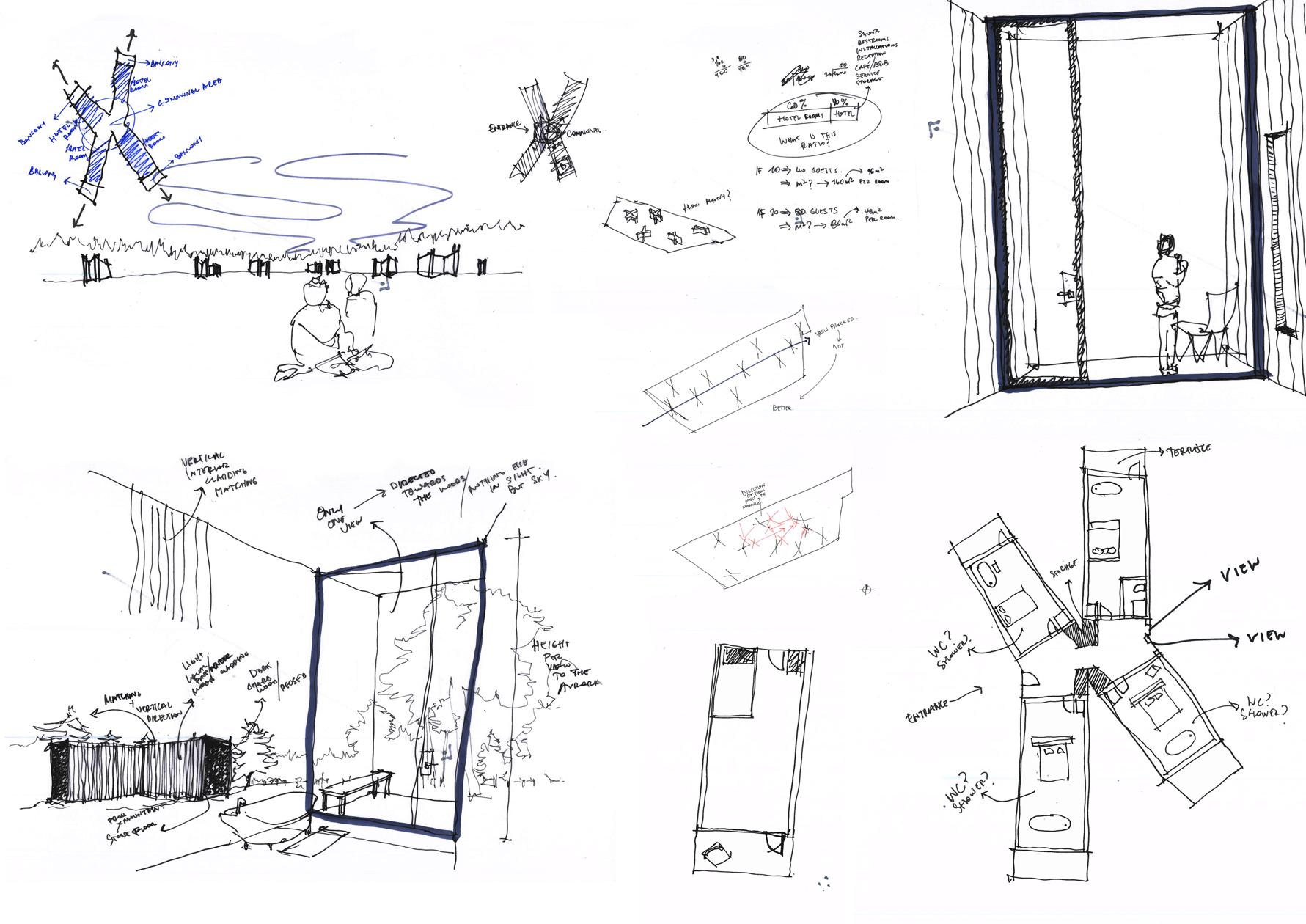

The
Of Acquiring Flow 47
Art
Figure 4.11 Sketches produced by Ragnar during the digital design session
Figure 4.13 Sketches produced by Marius during the digital design session

Figure 4.14 Sketches produced by Marius during the analogue design session

48 Results
Figure 4.15 Sketches produced by Isaak during the digital design session
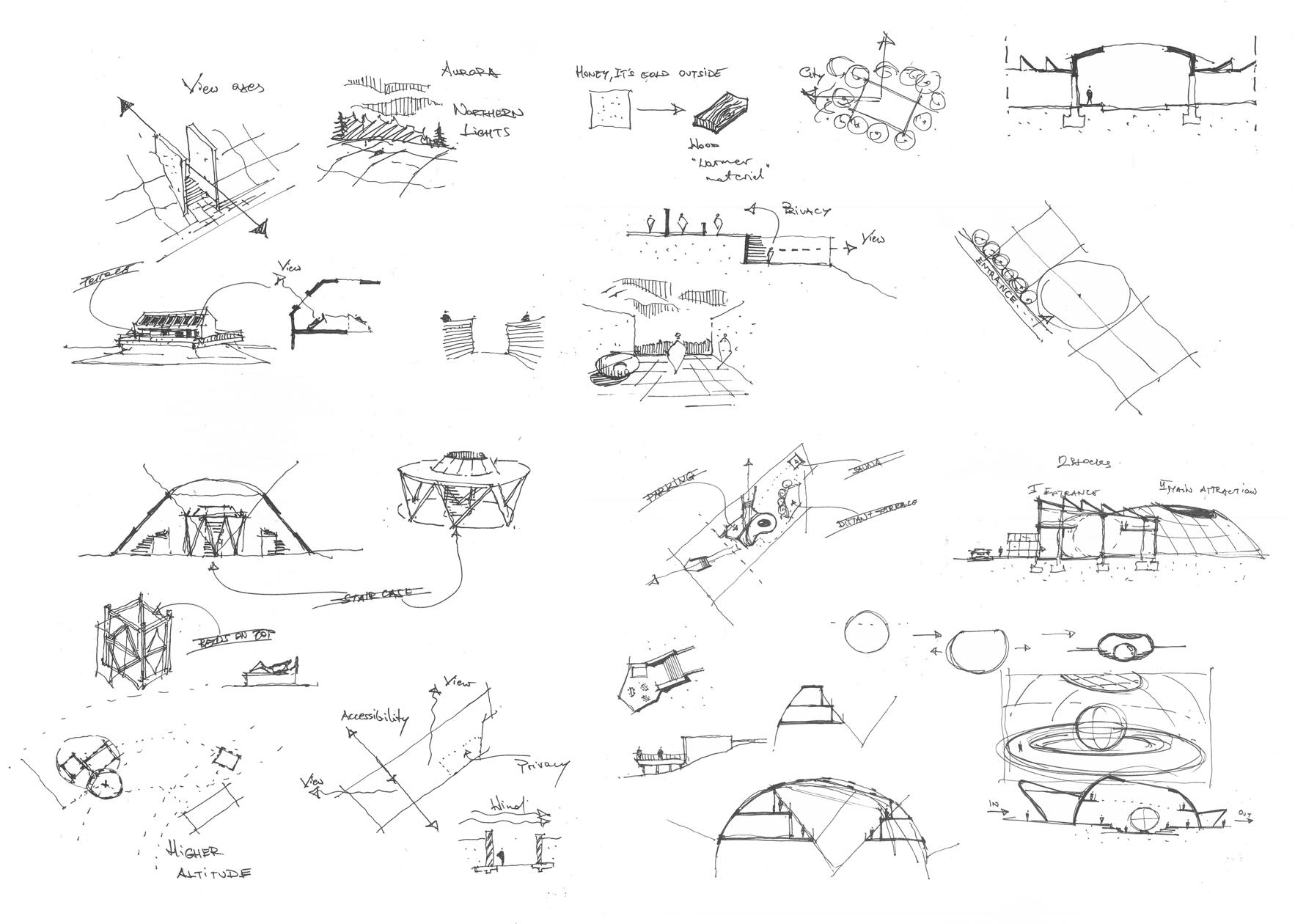
Figure 4.16 Sketches produced by Isaak during the analogue design session

The
Of Acquiring Flow 49
Art
50 Conclusion Conclusion Discussion Conclusion Future Research Acknowledgements 52 54 55 57 i. ii. iii. iv.
51
The Art Of Acquiring Flow
Discussion
Pre-task evaluation was quite inconsequential in highlighting clear differences between the two sketching conditions as participants viewed the assignment quite similarly albeit the higher interest that was shown towards the analogue task. This could be attributed to unfamiliarity of the context - Finland- to most of the participants which made the assignment intriguing.
The post-task evaluation indicated two clear differences: an increase in interest level for the digital session and an increase in perceived skill level for the analogue session. A tendency of being unable to put thoughts on the screen during the digital session is probably why interest level rose when the session was stopped. The use of analogue tools showed greater elaboration in the sketches and quantity of drawings produced which could be chalked up to why there was a drop in interest and increase in perceived skill.
The preconditions to achieving ‘design flow’ were more or less similar for both the sessions; the analogue condition had stronger ratings for eight of the twelve aspects. Amongst the clear differences, the results from the analogous session showed that intrinsic motivation was rated much higher and that distraction was much lower when compared to the digital session. The reason for increased anxiety and distraction in the digital group can be attributed to the frequency of tool focused activity that disrupted flow and consequently led to an inability to maintain a coherent stream of thought in the elaboration of an idea. The outlier regarding direct feedback was found to be low in both groups, inferring that this pre-flow condition was not met. A possible reason for this could be because no feedback on progress was given to the participants during the entirety of the session. A lack of confidence or experience is another possible explanation as flow is more easily experienced in individuals who did not depend on second opinions (Csikszentmihalyi 2009, 55-57).
Flow and arousal was found to be more predominant in the analogue session in comparison to the digital session. An observation that was made in the digital think aloud session was that tool driven tasks, which were monotonous and easy going, were mistaken for being in a flow state. Tasks that don’t require cognitive resources are instinctive and reflective and can be attributed to being in a state of control (Kahneman 2011, 35 - 38). With that observation, I found that when not in ‘design flow’, the participants found themselves feeling aroused or anxious in the analogue session whereas they found themselves feeling aroused or in control in the digital session.
As mentioned before, the results from the protocol analysis showed an increased frequency in tool focused activity in the digital sketching session. The inference from the aforementioned result is that it limited the number of design based moves and
52 Conclusion
impeded a reflective mode of working. The protocol analysis furthermore showed that non tool focused work, in the analogue session, showed clear transitioning from the naming of important objects in the design task to the framing of partial-solutions and sub-problems (Schön 2017).
Furthermore, there was a clear difference in the quality of the sketches. The participants produced a larger quantity of drawings that were more detailed and clearly showcased reflective practice in the analogue session. What is interesting to mention is that five of the ten participants in the analogue session produced a single idea even though they were aware that the objective was to produce more ideas. The participants in the digital session had a tendency of erasing their work when they didn’t like it and this was attributed to the association of digital design tools with perfection. Moreover, to my observation, the pursuit of the task in the digital assignment proved to be chaotic and highly objective. The participants seemed to shift from idea to idea without any clear direction whereas the pursuit of the task in the analogue session appeared to be more organic where sketches were layered and led to the building up or resolution of an idea.
After all the analysis, the results indicate that analogous sketching tools may create more opportunities to improve the ideation process through the attainment of ‘design flow’. Even so, it needs to be mentioned that digital tools can be beneficial to the design process as it allows for quick erasing, copy-pasting, scaling, the use of colours at a finger’s touch, the use of multiple sheets and the ability to view designed objects three dimensionally. Nonetheless, with that being said, the results highlight the lack of intuitiveness of digital tools in comparison to analogous tools with regards to conceptual ideation. Moreover, architect practitioners, as seen in the case of Isaak, need to be highly proficient and experienced with the use of digital tools in order to reduce tool focused activity. If this condition is met, then it is highly plausible that digital tools can be as fruitful as the traditional croquis towards attaining ‘design flow’ for conceptual ideation.
The Art Of Acquiring Flow 53
Conclusion
The purpose of this research was to demonstrate that the choice of design tool in the making of an architectural croquis influences an architect’s ‘design flow’ experience and productivity in ideation. In a study of ten MSc architecture students at the TUD, where both analogous and digital sketching tools were utilised by the participants, it was found that the use of analogous tools led to ‘richer’ and longer ‘design flow’ experiences, which were non-tool focused. The use of digital sketching tools led to a greater focus on tool driven activity to the detriment of design work, which had a negative impact on the participants’ flow experience. Although the results showed clear differences in the comparison of digital and traditional sketching tools, the findings cannot be generalised due to the sample size. Additionally, the studied sample was architecture students who, albeit having had a design education and professional experience, cannot be considered as expert designers. Nonetheless, the results show that traditional sketching still remains highly valuable for conceptual ideation as it allows an architect to have a ‘richer’ flow experience. Moreover, with architects and students ubiquitously utilising digital design tools today, due to its affordability and ease of access, the research highlights why architectural education needs to place a greater emphasis on the use of conventional design tools; a strong ability to ideate forms the foundation for the latter stages of design development. Even though the flow theory is utilised in the design of digital design tools and software nowadays, the research shows that they are not intuitive enough to replace conventional tools. The potential still exists to develop theory from this research that can facilitate the development of digital design tools and educational methodologies that can improve the field of architecture.
54 Conclusion
Future Research
The information extracted from this in-depth study with architecture students can lay the groundwork for future research on the influence of the tool on design flow and consequently ideation.
1. The same research framework can be utilised to study ‘design flow’ and the role of the tool when architects work together in a collaborative environment in order to better contextualise such a context driven task.
2. The same study could also be conducted for an extended period of time, whether it be over a couple of hours or a couple of days, as it was observed that some of the participants got into ‘design flow’ towards the end of the hour. The same individual study could also be conducted in an ‘in-the-wild’ context so that the participants feel more comfortable and less pressured during ideation.
3. Another possible research topic would be the impact of expertise or experience on ‘design flow’ when using different tools. What is the corollary of an individual’s skill level on the tool used and ‘design flow’? A glimpse of this was observed in the current study, as Isaak was an expert sketcher, but the data was insufficient to make any strong conclusions.
4. What if all possible design tools and modes of representation are included in the choice of tool? What would be the implication of this on ‘design flow’ and are there any tendencies with the use of a particular tool? This is another explorable avenue as suggested by a couple of the participants.
The Art Of Acquiring Flow 55
56 Conclusion
Acknowledgements
I would like to thank my mentors Elise Van Dooren and Roel Van de Pas along with my tutors Sabina Tanović, Mieke Vink, and Geert Coumans for their significant help and guidance towards the fulfilment of this research paper.
The Art Of Acquiring Flow 57
58 Research Plan References Appendix Bibliography Figure List 60 74 78 i. ii. iii.
59
The Art Of Acquiring Flow
Appendix 6.01 Pre-task evaluation questionnaire

60 References Appendix
Appendix 6.02 Post-task evaluation questionnaire

The
Of
Flow 61
Art
Acquiring
Appendix 6.03 Ideation flow questionnaire

62 References
Appendix 6.04 Flow wheel panorama
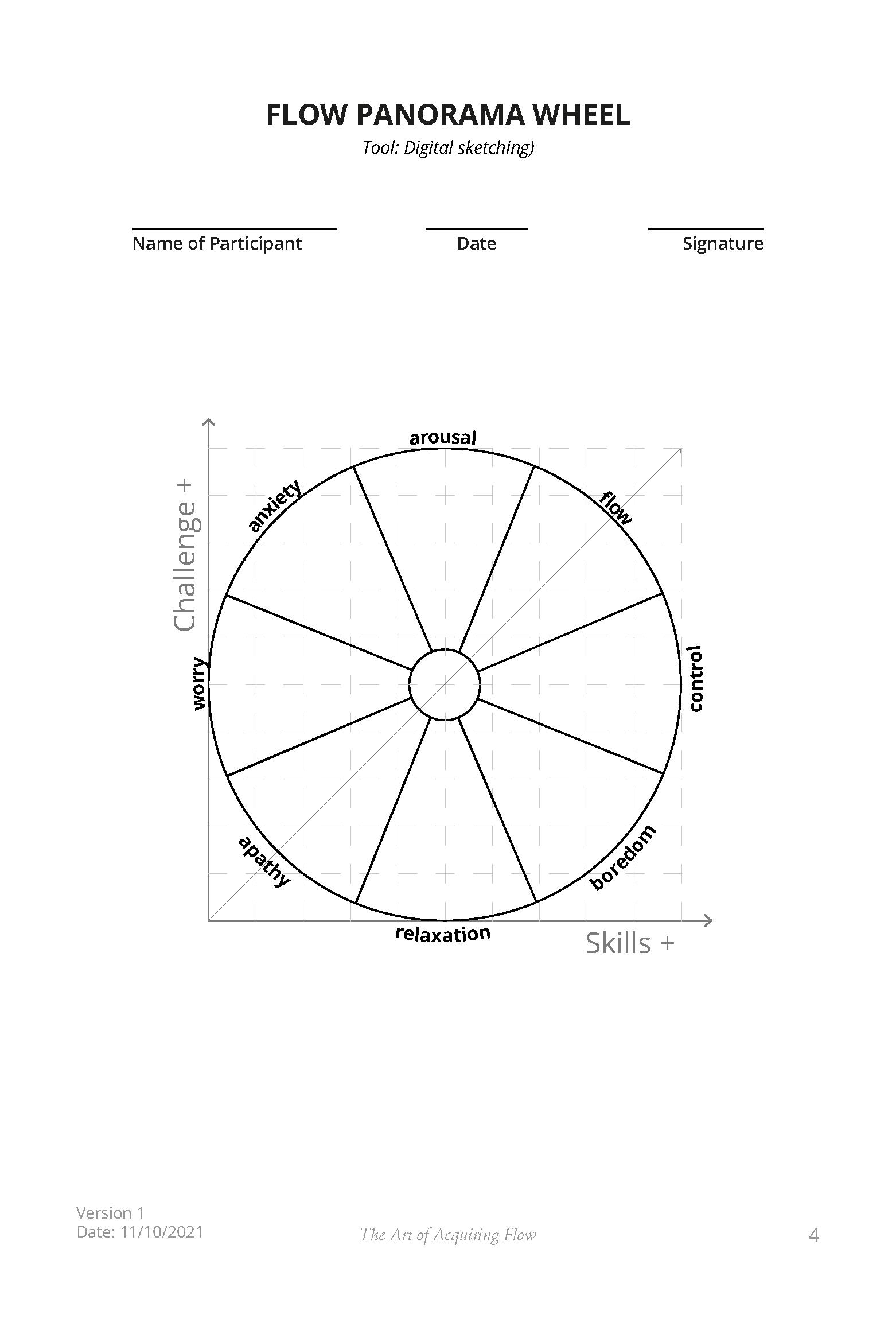
The
63
Art Of Acquiring Flow
Analogue Session
boredom relaxation apathy
Skills +
Digital Session
Challenge + Skills +
anxiety
o o
ar usal boredom relaxation apathy
flow w o r r y c o n t r o l
Challenge + Skills +
arousal boredom relaxation apathy
anxiety
flow w o r r y c o n t r o l
ar usal boredom relaxation apathy
anxiety 66 References
anxiety
Challenge + Skills +
flow w o r r y c o n t r o l
arousal boredom relaxation apathy
flow w o r r y c o n t r o l Challenge + Skills +
Bente Marius
w o l
Skills + w o l
boredom relaxation apathy
Appendix 6.07 Flow results of individual participants
Appendix 6.08 Sketches produced by Lana during the digital design session
Appendix 6.09 Sketches produced by Lana during the analogue design session
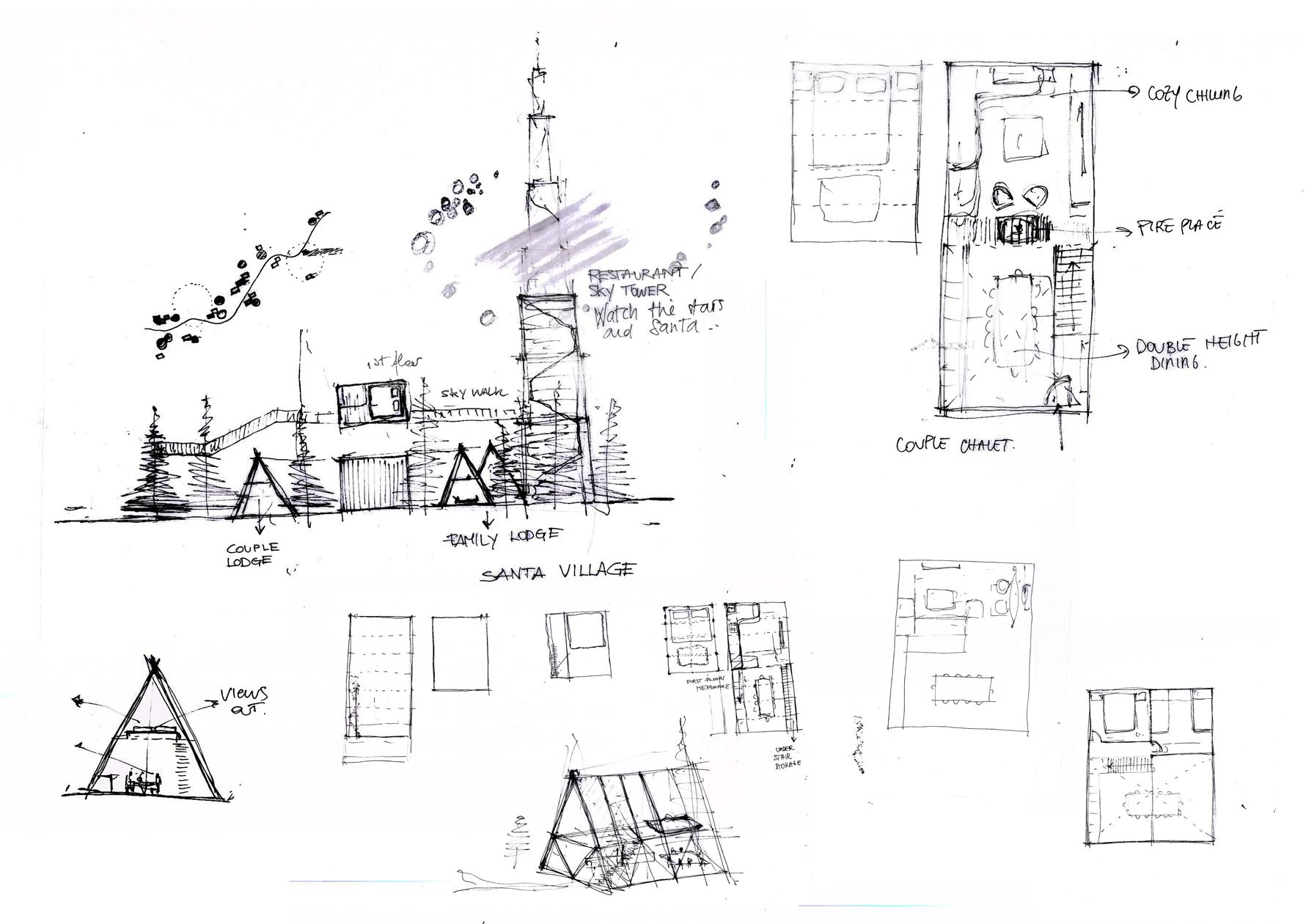

The
Of Acquiring Flow 67
Art
Appendix
Appendix 6.11 Sketches produced by Tim during the analogue design session
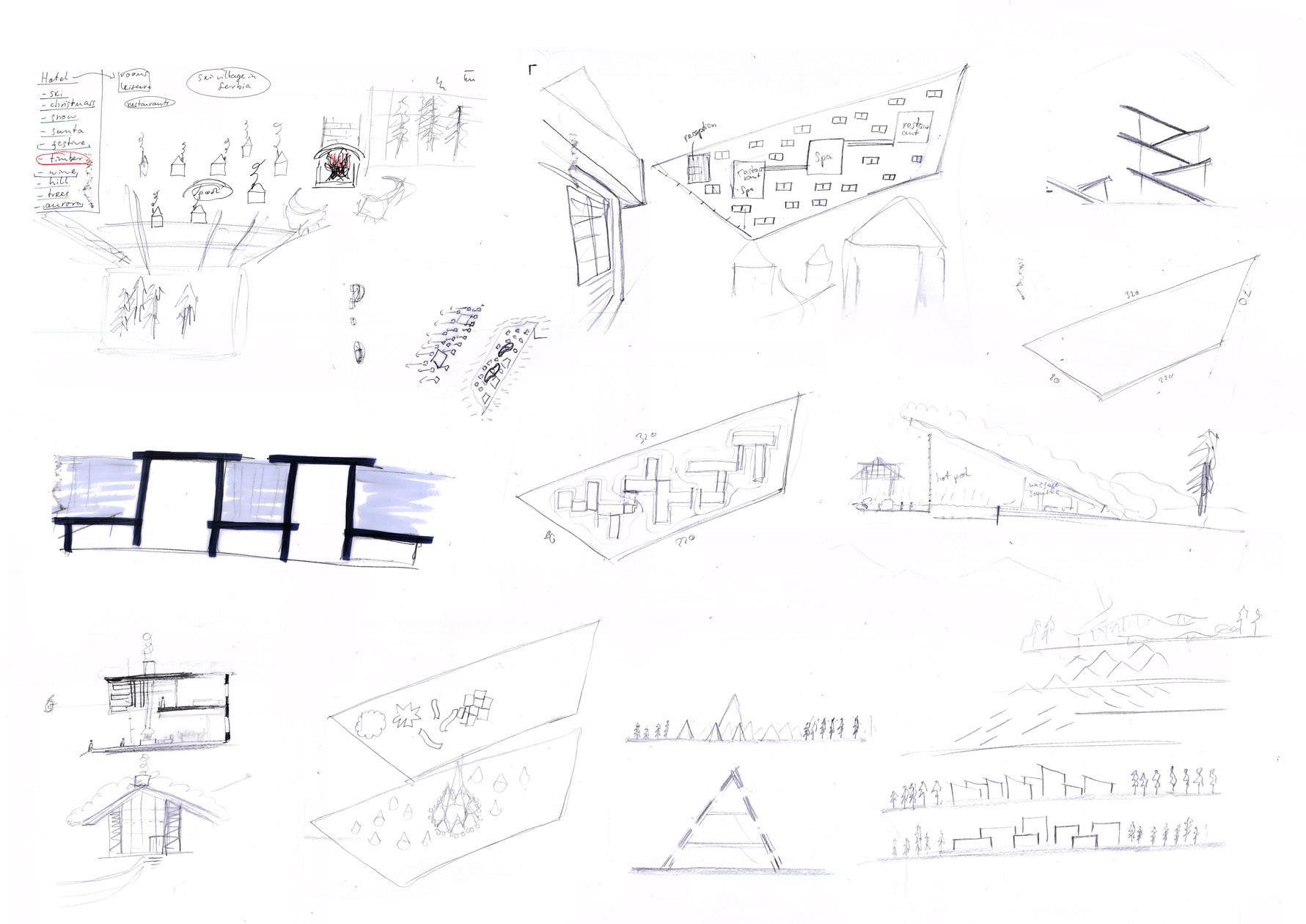
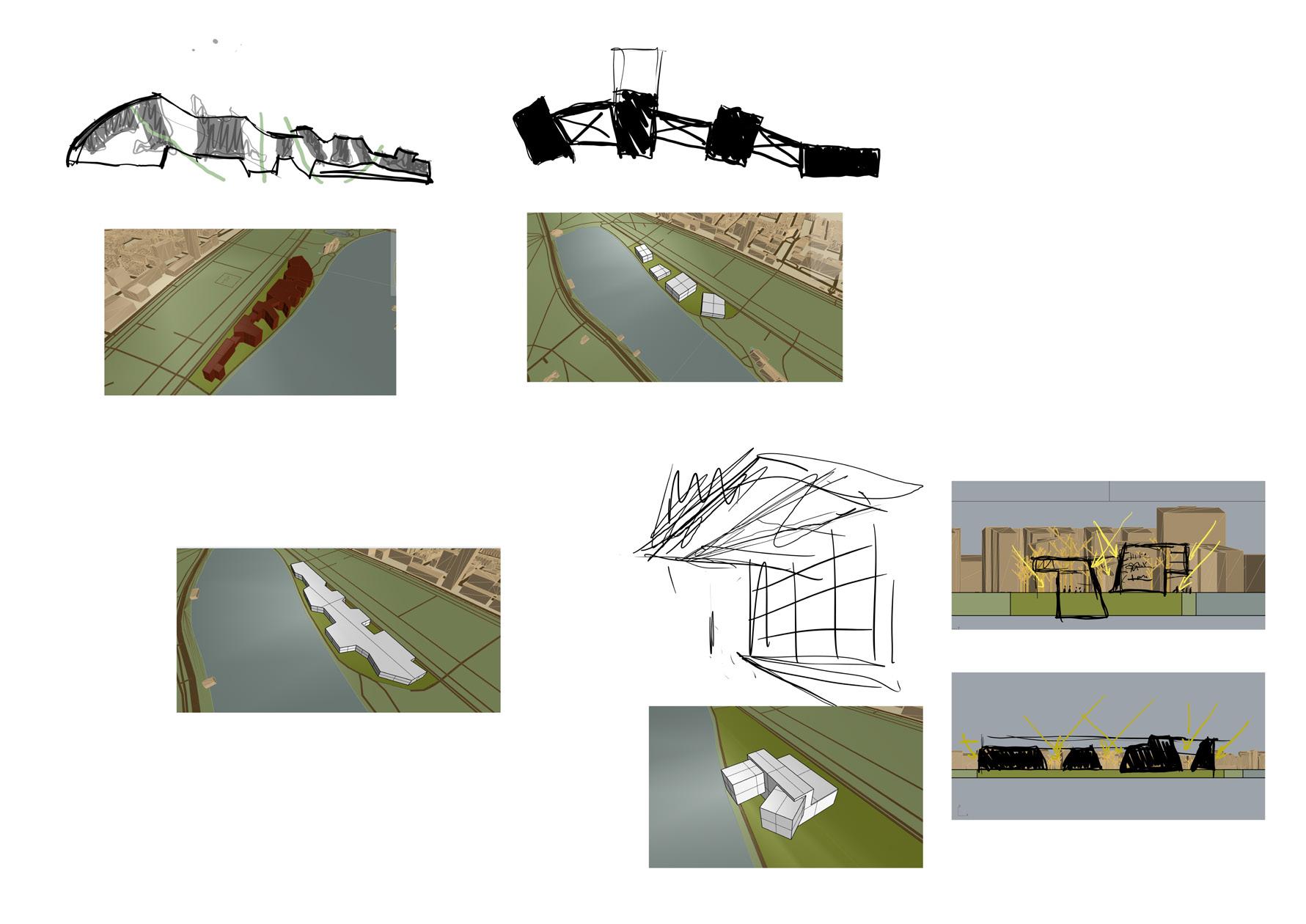
68 References
6.10 Sketches produced by Tim during the digital design session
Appendix 6.12 Sketches produced by Rhetta during the digital design session

Appendix 6.13 Sketches produced by Rhetta during the analogue design session
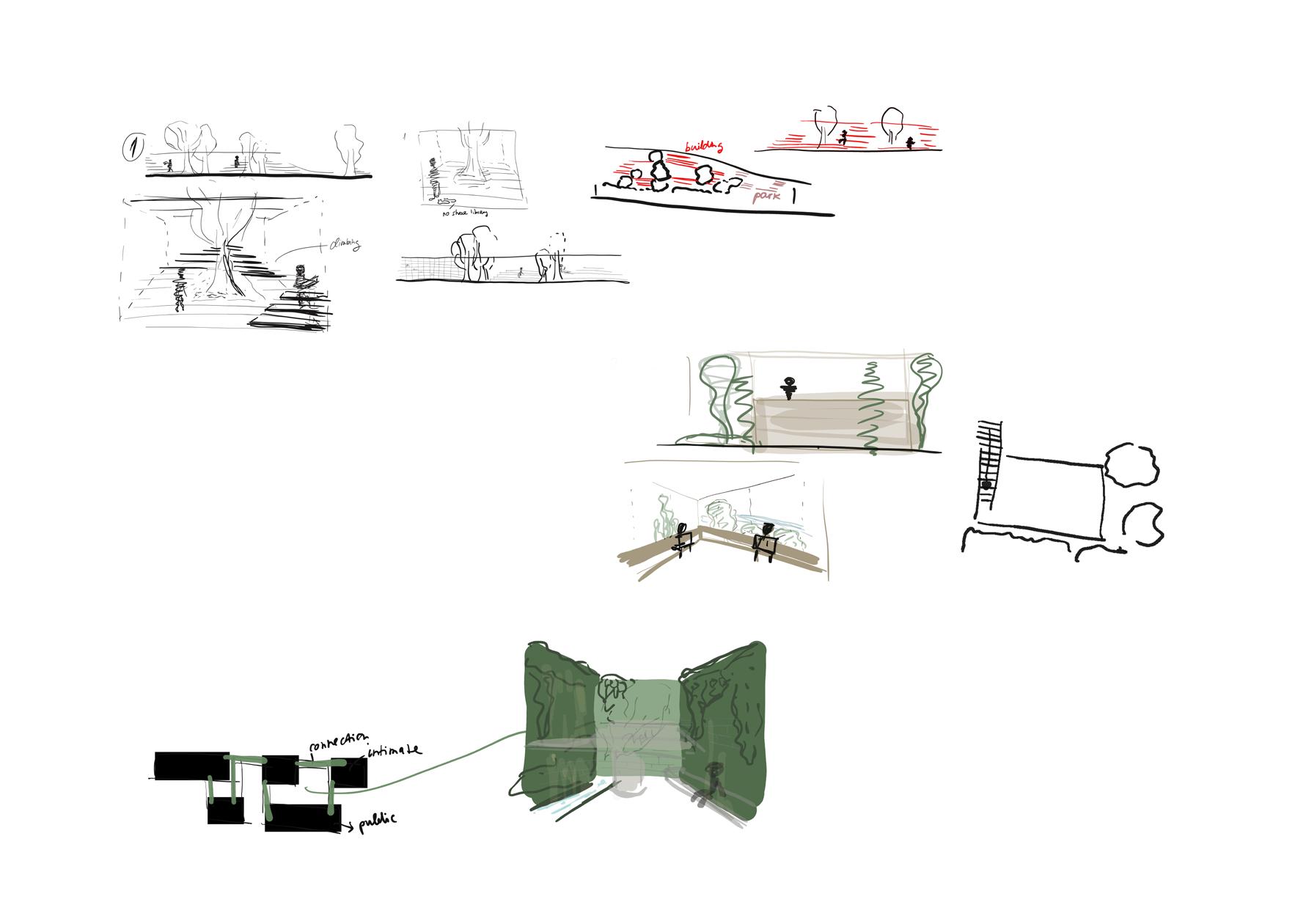
The
Of
69
Art
Acquiring Flow
Appendix 6.14 Sketches produced by Fabian during the digital design session
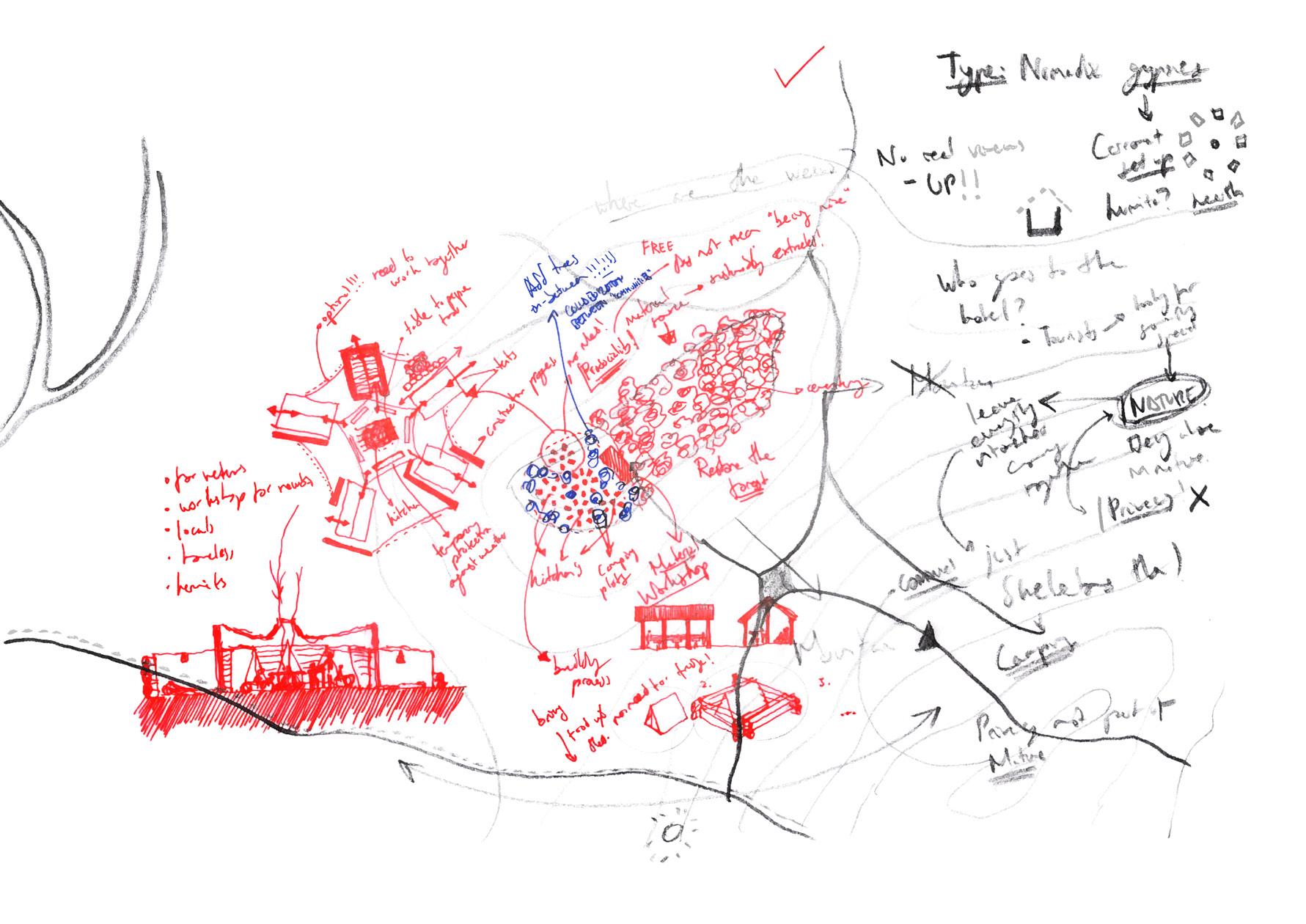
Appendix 6.15 Sketches produced by Fabian during the analogue design session

70 References
Appendix 6.16 Sketches produced by Sandra during the digital design session
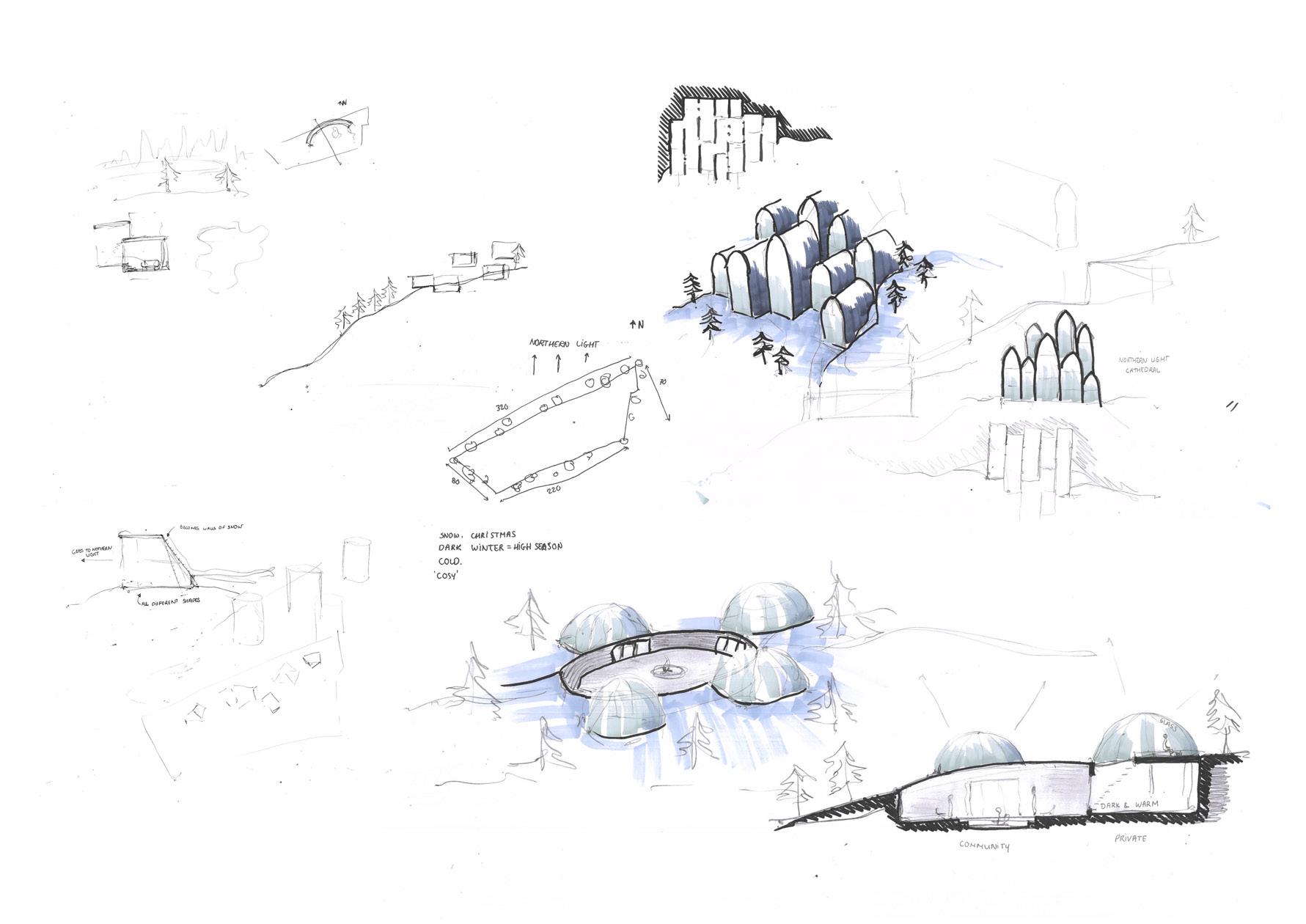
Appendix 6.17 Sketches produced by Sandra during the analogue design session
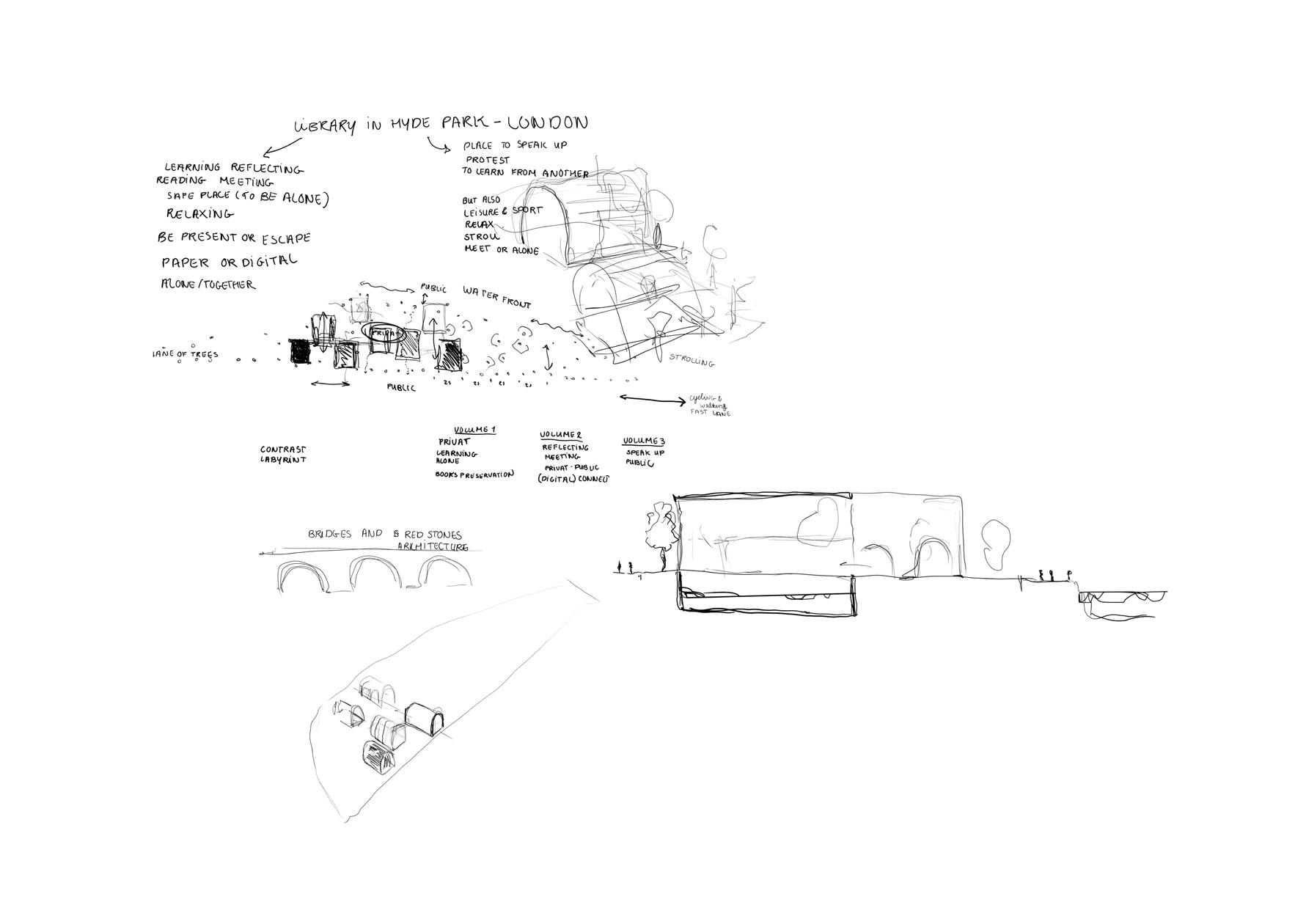
The
Of Acquiring Flow 71
Art
Appendix 6.18 Sketches produced by Demi during the digital design session

Appendix 6.19 Sketches produced by Demi during the analogue design session
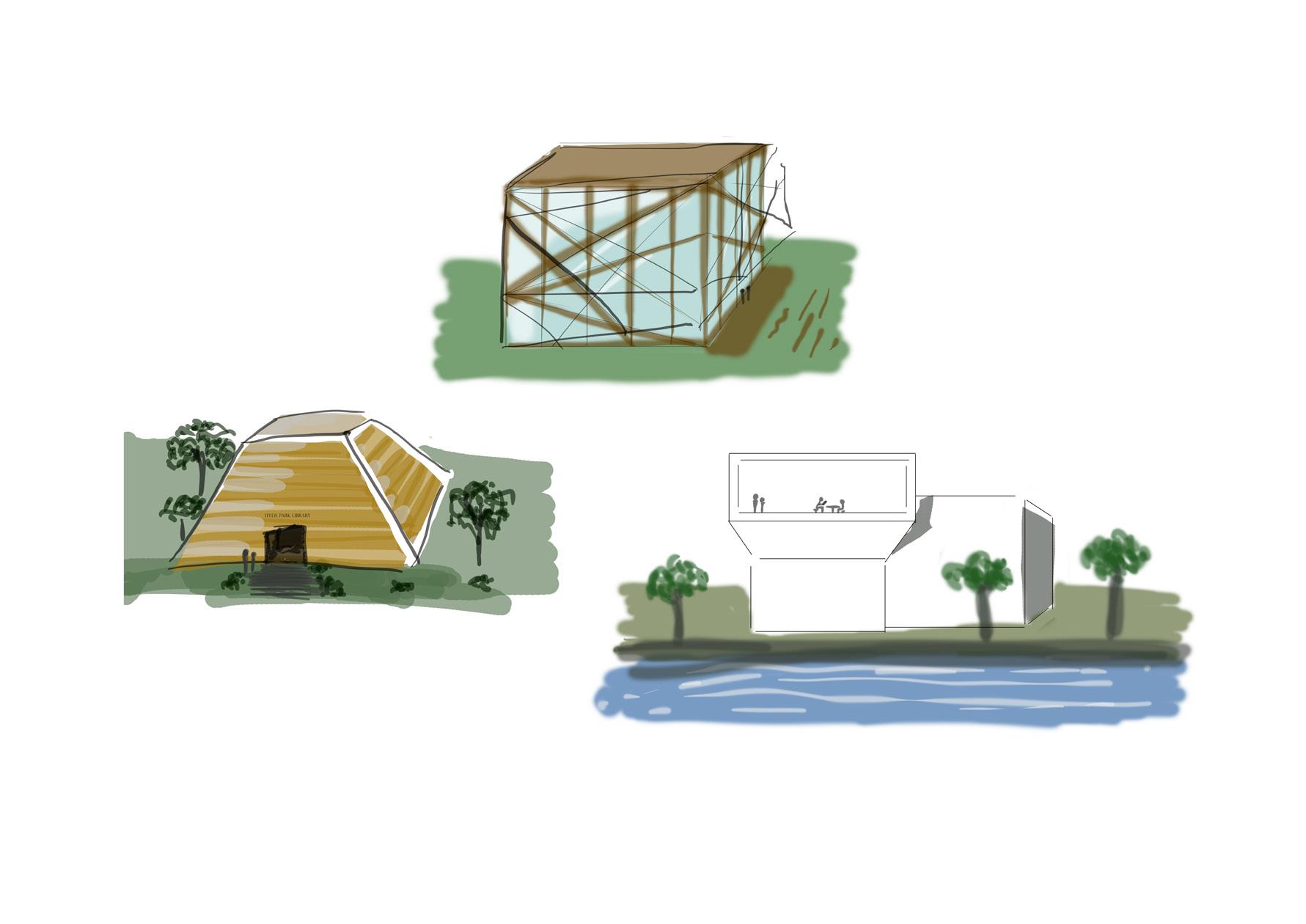
72 References
Appendix 6.20 Sketches produced by Bente during the digital design session
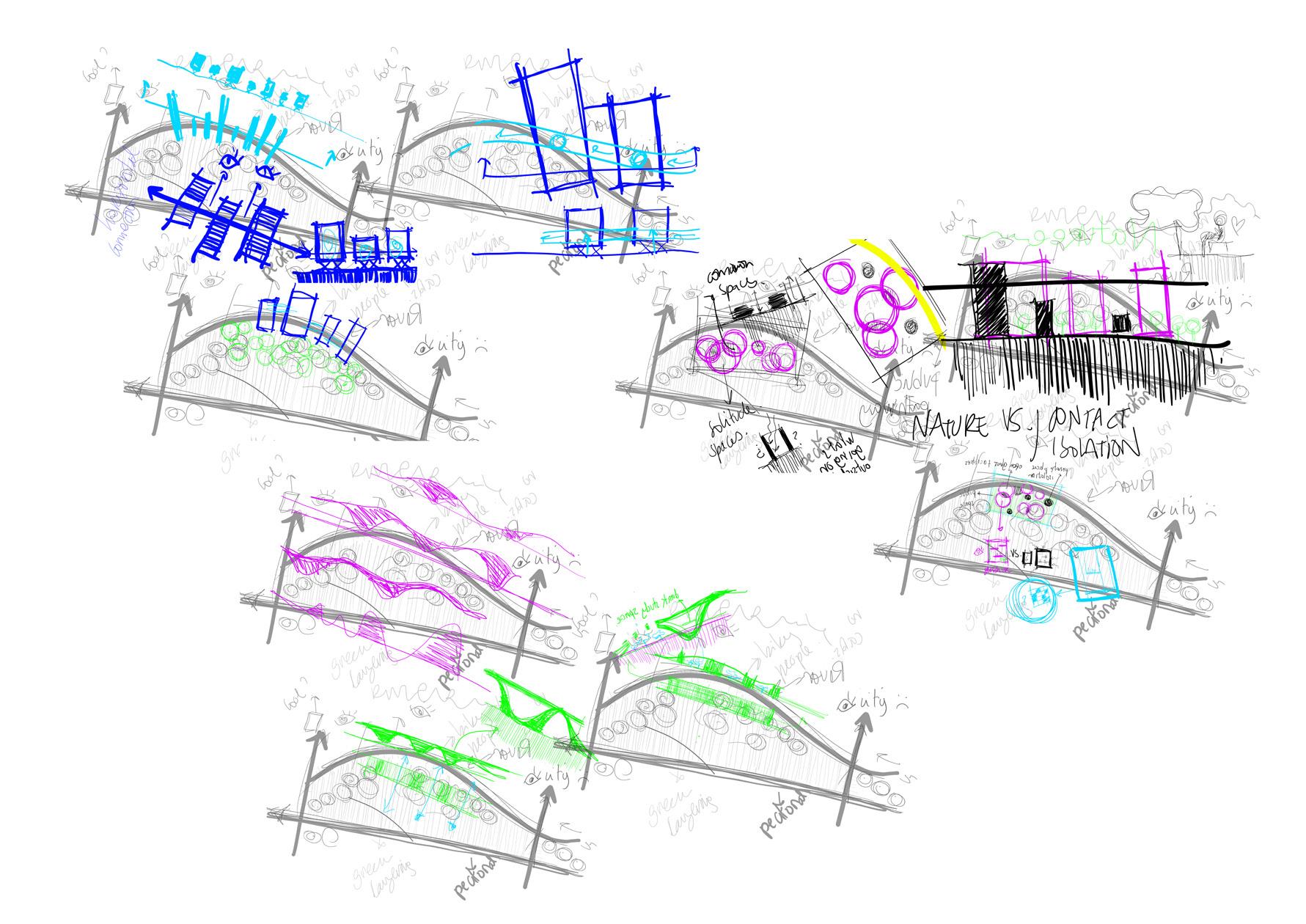
Appendix 6.21 Sketches produced by Bente during the analogue design session

The
Of
Flow 73
Art
Acquiring
Bibliography
Barr, Gavin James, and Ross Maclachlan. 2019. “THE RELATIONSHIP BETWEEN THE CHOICE OF SKETCHING TOOL AND STUDENT DESIGNERS’ FLOW.” DS 95: Proceedings of the 21st International Conference on Engineering and Product Design Education (E&PDE 2019), University of Strathclyde, Glasgow. 12th-13th September 2019. https://doi.org/10.35199/epde2019.92.
Baas, Matthijs, Carsten K. W. De Dreu, and Bernard A. Nijstad. 2008. “A meta-analysis of 25 years of moodcreativity research: hedonic tone, activation, or regulatory focus?” Psychol Bull 134 (6): 779-806. https://doi. org/10.1037/a0012815.
Badke-Schaub, Petra, S. Wallmeier and Dietrich Dörner. 1999. “Training for Designers: A Way to Reflect Design Processes and Cope with Critical Situations in order to Increase Efficiency” Proceedings of ICED ‘99, Vol.1, München.
Baskinger, Mark. 2008. “Pencils before pixels: a primer in hand-generated sketching.” Interactions 15 (2): 28–36. https://doi.org/10.1145/1340961.1340969.
Bilda, Zafer, and Halime Demirkan. 2003. “An insight on designers’ sketching activities in traditional versus digital media.” Design Studies 24 (1): 27-50. https://doi.org/https://doi.org/10.1016/S0142-694X(02)00032-7. https:// www.sciencedirect.com/science/article/pii/S0142694X02000327.
Bilda, Zafer, John S Gero, and Terry Purcell. 2006. “To sketch or not to sketch? That is the question.” Design studies 27 (5): 587-613. https://doi.org/https://doi.org/10.1016/j.destud.2006.02.002. https://www.sciencedirect.com/ science/article/pii/S0142694X06000317.
Bolden, Benjamin. 2009. “Activate creative thinking.” The Canadian Music Educator 50 (4): 4. https:// benjaminbolden.ca/wp-content/uploads/2011/06/2009-Bolden-CME-editorial-50-4-Activate-Creative-Thinking. pdf
Carpo, Mario. 2013. “The art of drawing.” Architectural Design 83 (5): 128-133.
Chai, Kah-Hin, and Xin Xiao. 2012. “Understanding design research: A bibliometric analysis of Design Studies (1996–2010).” Design Studies 33 (1): 24-43. https://doi.org/https://doi.org/10.1016/j.destud.2011.06.004. https:// www.sciencedirect.com/science/article/pii/S0142694X11000524.
Chandler, D. 2002. Semiotics the Basics. London, Routledge.
Csikszentmihalyi, Mihaly. 1997. Creativity: Flow and the Psychology of Discovery and Invention. New York, NY, US: HarperCollins Publishers.
Csikszentmihalyi, Mihaly. 2009. Flow: the Psychology of Optimal Experience. New York: Harper Row.
Cross, N., H. Christiaans and K. Dorst. 1996. Analysing Design Activity. Chichester, John Wiley & Sons.
Cummings, Darold, and David Hall. 2004. “Exploiting the Creative Process for Innovative Air Vehicle Design.” In 42nd AIAA Aerospace Sciences Meeting and Exhibit, In Aerospace Sciences Meetings. American Institute of Aeronautics and Astronautics. https://doi.org/10.2514/6.2004-417
Dorst, Kees, and Judith Dijkhuis. 1995. “Comparing paradigms for describing design activity.” Design Studies 16 (2): 261-274. https://doi.org/https://doi.org/10.1016/0142-694X(94)00012-3. https://www.sciencedirect.com/ science/article/pii/0142694X94000123.
Dorst, Kees. 2011. “The core of ‘design thinking’ and its application.” Design Studies 32 (6): 521-532. https://
74 References
doi.org/https://doi.org/10.1016/j.destud.2011.07.006. https://www.sciencedirect.com/science/article/pii/ S0142694X11000603.
Dorta, Tomás. 2008. “Design flow and ideation.” International Journal of Architectural Computing 6 (3): 299-316. https://doi.org/10.1260/1478-0771.6.3.299.
Dorta, Tomas, Edgar Perez, and Annemarie Lesage. 2008. “The ideation gap:: hybrid tools, design flow and practice.” Design studies 29 (2): 121-141. https://doi.org/10.1016/j.destud.2007.12.004. https://www. sciencedirect.com/science/article/pii/S0142694X07001068?via%3Dihub.
Elliot, Andrew J., and Carol S. Dweck. 2005. “Competence and Motivation: Competence as the Core of Achievement Motivation.” In Handbook of competence and motivation., 3-12. New York, NY, US: Guilford Publications.
Engeser, Stefan. 2012. Advances in flow research. Edited by Stefan Engeser. Advances in flow research. New York, NY, US: Springer Science + Business Media.
Gero, John S., and Thomas Mc Neill. 1998. “An approach to the analysis of design protocols.” Design Studies 19 (1): 21-61. https://doi.org/https://doi.org/10.1016/S0142-694X(97)00015-X. https://www.sciencedirect.com/ science/article/pii/S0142694X9700015X.
Goel, Vinod. 1995. Sketches of thought. Cambridge, Mass: MIT Press.
Goldschmidt, Gabriela. 1997. “Capturing indeterminism: representation in the design problem space.” Design Studies 18 (4): 441-455. https://doi.org/https://doi.org/10.1016/S0142-694X(97)00011-2. https://www. sciencedirect.com/science/article/pii/S0142694X97000112.
Goldschmidt, Gabriela. 2014. Linkography: Unfolding the Design Process. The MIT Press.
Goldschmidt, Gabriela. 1994. “On visual design thinking: the vis kids of architecture.” Design Studies 15 (2): 158-174. https://doi.org/https://doi.org/10.1016/0142-694X(94)90022-1. https://www.sciencedirect.com/science/article/ pii/0142694X94900221.
Goldschmidt, Gabriela. 1991. “The dialectics of sketching.” Creativity research journal 4 (2): 123-143. https://doi. org/10.1080/10400419109534381. https://www.tandfonline.com/doi/abs/10.1080/10400419109534381.
Groat, Linda N, and David Wang. 2013. Architectural Research Methods. Somerset, United States: John Wiley & Sons, Incorporated.
Hayes, John R. 1989. “Writing research: The analysis of a very complex task.” In D. Klahr & K. Kotovsky(Eds). Complex information processing. Hillsdale, NJ: Erlbaum, (2): 209-234. https://doi.org/10.4324/9780203761618.
Herbert, Daniel M. 1988. “Study Drawings in Architectural Design: Their Properties as a Graphic Medium.” Journal of Architectural Education 41 (2): 26-38.https://doi.org/10.2307/1424832.http://www.jstor.org.tudelft.idm.oclc. org/stable/1424832.
Ibrahim, Rahinah, and Farzad Pour Rahimian. 2010. “Comparison of CAD and manual sketching tools for teaching architectural design.” Automation in Construction 19 (8): 978-987. https://doi.org/https://doi.org/10.1016/j. autcon.2010.09.003. https://www.sciencedirect.com/science/article/pii/S0926580510001329.
Jonson, Ben. 2005. “Design ideation: the conceptual sketch in the digital age.” Design Studies 26 (6): 613-624. https://doi.org/https://doi.org/10.1016/j.destud.2005.03.001. https://www.sciencedirect.com/science/article/ pii/S0142694X05000189.
Art Of Acquiring Flow
The
75
Kahneman, Daniel. 2011. Thinking, Fast and Slow. New York, NY, US: Farrar, Straus and Giroux.
Keller, Johannes, and Anne Landhäußer. 2012. “The Flow Model Revisited.” In Advances in Flow Research, edited by Stefan Engeser, 51-64. New York, NY: Springer New York.
Kronmüller, Linda. 2020. “The Apiarium Garden: How to live with nature.” MSc diss., Technical University of Delft. http://resolver.tudelft.nl/uuid:f440f731-1ffc-418a-81f4-5e04bcb80363.
Lawson, Bryan. 1997. How designers think: the design process demystified. Oxford: Architectural Press.
Lawson, Bryan, and Shee Ming Loke. 1997. “Computers, words and pictures.” Design Studies 18 (2): 171-183. https://doi.org/https://doi.org/10.1016/S0142-694X(97)85459-2. https://www.sciencedirect.com/science/ article/pii/S0142694X97854592.
Lauche, Kristina. 2001 “Heedful Action, Reflection, and Transfer in the Design Process.” Proceedings of ICED ‘01, Vol.1, Glasgow.
Lauche, Kristina. 2002. “Facilitating creativity and shared understanding in design teams.” DS 30: Proceedings of DESIGN 2002, the 7th International Design Conference, Dubrovnik.
Mankar, R., P. Bawane, T. Landge, P. Dalal, and V. Gour. 2014. “Brain wave sensing.” 2014 Annual IEEE India Conference (INDICON), 11-13 Dec. 2014.
Mayers, P. 1978. “Flow in Adolescence and Its Relation to School Experience.” Unpublished Doctoral Dissertation, Chicago, IL: University of Chicago.
Michel, Ralf. 2007. Design Research Now. Berlin, Birkhäuser Verlag AG.
Pallasmaa, Juhani. 2012. The Eyes of the Skin : Architecture and the Senses. 3rd ed. Hoboken: John Wiley & Sons.
Pallasmaa, Juhani. 2015. The Thinking Hand: Existential and Embodied Wisdom in Architecture. Chichester: Wiley.
Pei, Eujin, Ian Campbell, and Mark Evans. 2011. “A Taxonomic Classification of Visual Design Representations Used by Industrial Designers and Engineering Designers.” The Design Journal 14 (1): 64-91. https://doi.org/10.2752/17 5630610X12877385838803.
Perry, Gabriela Trindade, and Klaus Krippendorff. 2013. “On the reliability of identifying design moves in protocol analysis.” Design Studies 34 (5): 612-635. https://doi.org/https://doi.org/10.1016/j.destud.2013.02.001. https:// www.sciencedirect.com/science/article/pii/S0142694X13000203.
Plimmer, Beryl, Gene Tang, and Mark Young. 2006. “Sketch Tool Usability: Allowing the user to disengage.” People and Computers XX (Proceedings of HCI 2006). https://cs.auckland.ac.nz/~beryl/publications/ACM%202006%20 Sketch%20Tool%20Usability%20Allowing%20the%20user%20to%20disengage.pdf
Reymen, Isabelle M.M.J. 2001. “Improving Design Processes through Structured Reflection: A Domain-independent Approach.” Ph.D. thesis, Technische Universiteit Eindhoven. https://doi.org/10.6100/IR538800
Schön, Donald A. 1988. “Designing: Rules, Types and Worlds.” Design Studies 9 (3): 181-90. https://doi.org/https:// doi.org/10.1016/0142-694X(88)90047-6. https://www.sciencedirect.com/science/article/pii/0142694X88900476.
Schön, Donald A. 2017. The Reflective Practitioner. Taylor and Francis.
Self, James, Mark Evans, and Eun Jin Kim. 2016. “A Comparison of Digital and Conventional Sketching: Implications
76 References
for Conceptual Design Ideation.” Journal of Design Research 14 (2): 171-202. https://doi.org/10.1504/ JDR.2016.077028, https://www.inderscienceonline.com/doi/abs/10.1504/JDR.2016.077028.
Suwa, Masaki, and Barbara Tversky. 1997. “What do architects and students perceive in their design sketches? A protocol analysis.” Design Studies 18 (4): 385-403. https://doi.org/https://doi.org/10.1016/S0142-694X(97)00008-2. https://www.sciencedirect.com/science/article/pii/S0142694X97000082.
Shenoy, Rohan. 2021. “Designing for Flow: How to Enhance Learning in Individuals.” MSc2 history thesis, Technical University of Delft. http://resolver.tudelft.nl/uuid:cf35c1af-44f5-4775-a898-a2f50b81ca54.
Stones, Catherine, and Tom Cassidy. 2007. “Comparing synthesis strategies of novice graphic designers using digital and traditional design tools.” Design Studies 28 (1): 59-72. https://doi.org/https://doi.org/10.1016/j. destud.2006.09.001. https://www.sciencedirect.com/science/article/pii/S0142694X06000731.
Stumpf, S. C., and J. T. McDonnell. 2002. “Talking about team framing: using argumentation to analyse and support experiential learning in early design episodes.” Design Studies 23 (1): 5-23. https://doi.org/https://doi.org/10.1016/ S0142-694X(01)00020-5. https://www.sciencedirect.com/science/article/pii/S0142694X01000205.
Tang, H. H., Y. Y. Lee, and J. S. Gero. 2011. “Comparing collaborative co-located and distributed design processes in digital and traditional sketching environments: A protocol study using the function–behaviour–structure coding scheme.” Design Studies 32 (1): 1-29. https://doi.org/https://doi.org/10.1016/j.destud.2010.06.004. https://www. sciencedirect.com/science/article/pii/S0142694X10000475.
Valkenburg, Rianne C. 2000 “The Reflective Practice in Product Design Teams”, Ph.D. Thesis, Technische Universiteit Delft. http://resolver.tudelft.nl/uuid:8bbe62ab-e761-46f7-b386-3ead14a9d56d
Valkenburg, Rianne C., and Kees Dorst. 1998. “The reflective practice of design teams.” Design Studies 19 (3): 249271. https://doi.org/https://doi.org/10.1016/S0142-694X(98)00011-8. https://www.sciencedirect.com/science/ article/pii/S0142694X98000118.
Verstijnen, I. M., C. van Leeuwen, G. Goldschmidt, R. Hamel, and J. M. Hennessey. 1998. “Sketching and creative discovery.” Design Studies 19 (4): 519-546. https://doi.org/https://doi.org/10.1016/S0142-694X(98)00017-9. https://www.sciencedirect.com/science/article/pii/S0142694X98000179.
Art Of Acquiring Flow
The
77
Figure List
Front Cover. Shenoy, Rohan. The Art of Acquiring Flow. January 4, 2022. Illustration.
Figure 1.01 Emmons, P., Feuerstein, M., & Dayer, C. Confabulations: Storytelling in Architecture. London: Routledge, 2016, p 250. https://doi.org/10.4324/9781315573359
Figure 2.01 Shenoy, Rohan. Flow Theory. January 3, 2022. Illustration. From Csikszentmihalyi, Mihaly. 2009. Flow: the Psychology of Optimal Experience. New York: Harper Row.
Figure 2.02 Shenoy, Rohan. The four design activities and their interplay. January 3, 2022. Illustration. From Valkenburg, Rianne C., and Kees Dorst. 1998. “The reflective practice of design teams.” Design Studies 19 (3): 249-271. https://doi.org/https://doi.org/10.1016/S0142-694X(98)00011-8. https://www.sciencedirect.com/ science/article/pii/S0142694X98000118.
Figure 2.03 Shenoy, Rohan. The four conceptual coding activities. January 3, 2022. Illustration. From Valkenburg, Rianne C., and Kees Dorst. 1998. “The reflective practice of design teams.” Design Studies 19 (3): 249-271. https://doi.org/https://doi.org/10.1016/S0142-694X(98)00011-8. https://www.sciencedirect.com/science/ article/pii/S0142694X98000118.
Figure 2.04 Shenoy, Rohan. Functional usefulness of different modes of representation in problem solving. January 3, 2022. Illustration. From Goldschmidt, Gabriela. 2017. “Design Thinking: A Method or a Gateway into Design Cognition?” She Ji: The Journal of Design, Economics, and Innovation 3 (2): 107-112. https://doi.org/https://doi. org/10.1016/j.sheji.2017.10.009. https://www.sciencedirect.com/science/article/pii/S2405872617301235.
Figure 2.05 Dorta, Tomás, Edgar Perez, and Annemarie Lesage. “The Ideation Gap: Hybrid Tools, Design Flow and Practice.” Design studies 29, no. 2 (2008): 121-41. https://doi.org/10.1016/j.destud.2007.12.004. https://www. sciencedirect.com/science/article/pii/S0142694X07001068?via%3Dihub.
Figure 3.01 Shenoy, Rohan. Participant Profiles. January 3, 2022. Table.
Figure 3.02 Shenoy, Rohan. Participants. January 3, 2022. Illustration.
Figure 3.03 Shenoy, Rohan. Tools utilised to record study task environments. January 3, 2022. Illustration.
Figure 3.04 Shenoy, Rohan. Resources provided during each design task. January 3, 2022. Illustration.
Figure 3.05 Shenoy, Rohan. Participants in study task environment. January 3, 2022. Illustration.
Figure 3.06 Shenoy, Rohan. Evaluation Forms. January 3, 2022. Illustration.
Figure 3.07 Shenoy, Rohan. Flow wheel. January 3, 2022. Illustration. From Dorta, Tomás, Edgar Perez, and Annemarie Lesage. “The Ideation Gap: Hybrid Tools, Design Flow and Practice.” Design studies 29, no. 2 (2008): 121-41. https://doi.org/10.1016/j.destud.2007.12.004. https://www.sciencedirect.com/science/article/pii/ S0142694X07001068?via%3Dihub.
Figure 4.01 Shenoy, Rohan. Pre-evaluation task results. January 3, 2022. Table.
Figure 4.02 Shenoy, Rohan. Post-evaluation task results. January 3, 2022. Table.
Figure 4.03 Shenoy, Rohan. Flow scale results. January 3, 2022. Table.
Figure 4.04 Shenoy, Rohan. Flow wheel results. January 3, 2022. Table.
Figure 4.05 Shenoy, Rohan. Flow results of individual participants. January 3, 2022. Illustration.
78 References
Figure 4.06 Shenoy, Rohan. Brain wave graphs. January 3, 2022. Illustration.
Figure 4.07 Shenoy, Rohan. NMFR + TDR/non-TDR results. January 3, 2022. Table.
Figure 4.08 Shenoy, Rohan. Flow-diagram illustrating analogue design activity of Ragnar. TDR-focused activity in black January 3, 2022. Illustration.
Figure 4.09 Shenoy, Rohan. Flow-diagram illustrating digital design activity of Ragnar. TDR-focused activity in black January 3, 2022. Illustration.
Figure 4.10 Shenoy, Rohan. Croquis results. January 3, 2022. Table.
Figure 4.11 Shenoy, Rohan. Sketches produced by Ragnar during the digital design session. January 3, 2022. Drawing. Reproduced by permission of the participant.
Figure 4.12 Shenoy, Rohan. Sketches produced by Ragnar during the analogous design session. January 3, 2022. Drawing. Reproduced by permission of the participant.
Figure 4.13 Shenoy, Rohan. Sketches produced by Marius during the digital design session. January 3, 2022. Drawing. Reproduced by permission of the participant.
Figure 4.14 Shenoy, Rohan. Sketches produced by Marius during the analogous design session. January 3, 2022. Drawing. Reproduced by permission of the participant.
Figure 4.15 Shenoy, Rohan. Sketches produced by Isaak during the digital design session. January 3, 2022. Drawing. Reproduced by permission of the participant.
Figure 4.16 Shenoy, Rohan. Sketches produced by Isaak during the analogous design session. January 3, 2022. Drawing. Reproduced by permission of the participant.
Appendix 6.01 Shenoy, Rohan. Pre-task evaluation questionnaire. January 3, 2022. Questionnaire. From Barr, Gavin James, and Ross Maclachlan. 2019. “THE RELATIONSHIP BETWEEN THE CHOICE OF SKETCHING TOOL AND STUDENT DESIGNERS’ FLOW.” DS 95: Proceedings of the 21st International Conference on Engineering and Product Design Education (E&PDE 2019), University of Strathclyde, Glasgow. 12th-13th September 2019. https://doi.org/10.35199/epde2019.92.
Appendix 6.02 Shenoy, Rohan. Post-task evaluation questionnaire. January 3, 2022. Questionnaire. From Barr, Gavin James, and Ross Maclachlan. 2019. “THE RELATIONSHIP BETWEEN THE CHOICE OF SKETCHING TOOL AND STUDENT DESIGNERS’ FLOW.” DS 95: Proceedings of the 21st International Conference on Engineering and Product Design Education (E&PDE 2019), University of Strathclyde, Glasgow. 12th-13th September 2019. https://doi.org/10.35199/epde2019.92.
Appendix 6.03 Shenoy, Rohan. Ideation flow questionnaire. January 3, 2022. Questionnaire. From Dorta, Tomás, Edgar Perez, and Annemarie Lesage. “The Ideation Gap: Hybrid Tools, Design Flow and Practice.” Design studies 29, no. 2 (2008): 121-41. https://doi.org/10.1016/j.destud.2007.12.004. https://www.sciencedirect.com/science/ article/pii/S0142694X07001068?via%3Dihub.
Appendix 6.04 Shenoy, Rohan. Flow wheel panorama. January 3, 2022. Questionnaire. From Dorta, Tomás, Edgar Perez, and Annemarie Lesage. “The Ideation Gap: Hybrid Tools, Design Flow and Practice.” Design studies 29, no. 2 (2008): 121-41. https://doi.org/10.1016/j.destud.2007.12.004. https://www.sciencedirect.com/science/ article/pii/S0142694X07001068?via%3Dihub.
The Art Of Acquiring Flow
79
Appendix 6.05 Shenoy, Rohan. Flow results of Fabian, Demi and Lana. January 3, 2022. Illustration. Reproduced by permission of the participants.
Appendix 6.06 Shenoy, Rohan. Flow results of Tim, Rhetta and Sandra. January 3, 2022. Illustration. Reproduced by permission of the participants.
Appendix 6.07 Shenoy, Rohan. Flow results of Bente and Marius. January 3, 2022. Illustration. Reproduced by permission of the participants.
Appendix 6.08 Shenoy, Rohan. Sketches produced by Lana during the digital design session. January 3, 2022. Drawing. Reproduced by permission of the participant.
Appendix 6.09 Shenoy, Rohan. Sketches produced by Lana during the analogous design session. January 3, 2022. Drawing. Reproduced by permission of the participant.
Appendix 6.10 Shenoy, Rohan. Sketches produced by Tim during the digital design session. January 3, 2022. Drawing. Reproduced by permission of the participant.
Appendix 6.11 Shenoy, Rohan. Sketches produced by Tim during the analogous design session. January 3, 2022. Drawing. Reproduced by permission of the participant.
Appendix 6.12 Shenoy, Rohan. Sketches produced by Rhetta during the digital design session. January 3, 2022. Drawing. Reproduced by permission of the participant.
Appendix 6.13 Shenoy, Rohan. Sketches produced by Rhetta during the analogous design session. January 3, 2022. Drawing. Reproduced by permission of the participant.
Appendix 6.14 Shenoy, Rohan. Sketches produced by Fabian during the digital design session. January 3, 2022. Drawing. Reproduced by permission of the participant.
Appendix 6.15 Shenoy, Rohan. Sketches produced by Fabian during the analogous design session. January 3, 2022. Drawing. Reproduced by permission of the participant.
Appendix 6.16 Shenoy, Rohan. Sketches produced by Sandra during the digital design session. January 3, 2022. Drawing. Reproduced by permission of the participant.
Appendix 6.17 Shenoy, Rohan. Sketches produced by Sandra during the analogous design session. January 3, 2022. Drawing. Reproduced by permission of the participant.
Appendix 6.18 Shenoy, Rohan. Sketches produced by Demi during the digital design session. January 3, 2022. Drawing. Reproduced by permission of the participant.
Appendix 6.19 Shenoy, Rohan. Sketches produced by Demi during the analogous design session. January 3, 2022. Drawing. Reproduced by permission of the participant.
Appendix 6.20 Shenoy, Rohan. Sketches produced by Bente during the digital design session. January 3, 2022. Drawing. Reproduced by permission of the participant.
Appendix 6.21 Shenoy, Rohan. Sketches produced by Bente during the analogous design session. January 3, 2022. Drawing. Reproduced by permission of the participant.
80 References
The Art Of Acquiring Flow 81
